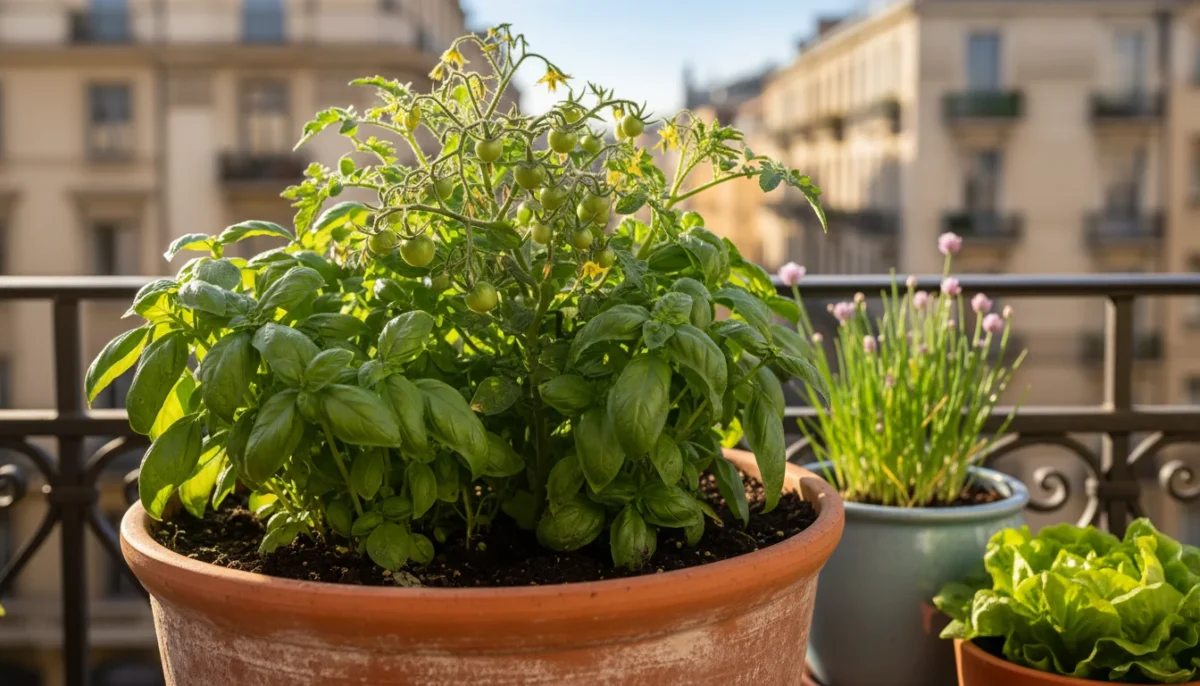You work hard to create a vibrant, productive small-space garden, whether it is on a balcony, a patio, or in a compact backyard. Imagine maximizing your harvests, deterring pests naturally, and even enhancing the flavor of your vegetables with a simple yet powerful technique: companion planting with herbs. This approach leverages nature’s wisdom, allowing different plants to support each other for mutual benefit. You do not need a sprawling farm to experience these advantages. Instead, you can apply these principles directly to your containers, raised beds, and compact garden plots.
This article shows you how to choose and use the best herbs for vegetables, turning your small garden into a thriving ecosystem. You will gain practical, actionable insights on garden plant pairing, empowering you to cultivate healthier plants and enjoy more abundant yields. Whether you are a beginner or an intermediate gardener, integrating companion herbs offers a low-maintenance, environmentally conscious way to boost your garden’s success.
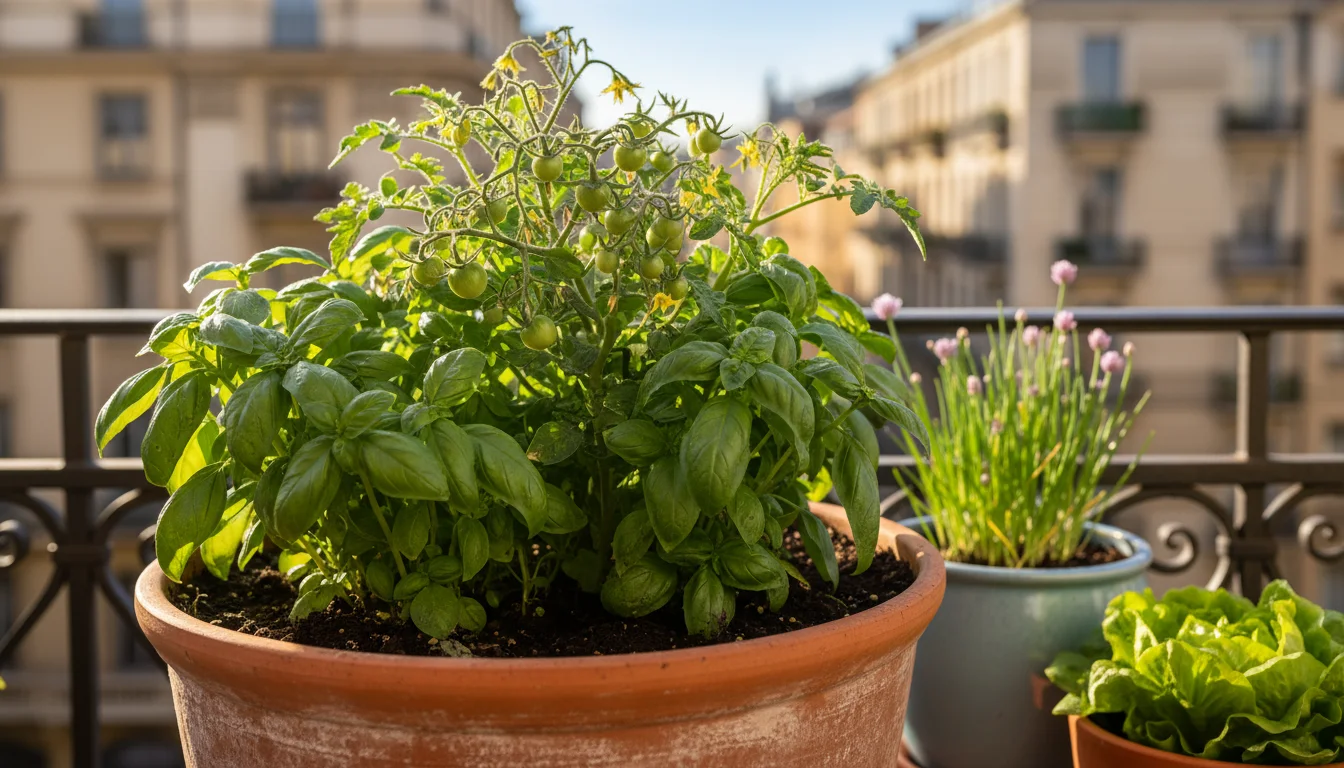
Understanding Companion Herbs for Vegetable Gardens
Companion planting is an age-old gardening practice where you plant different species close together to achieve specific benefits. These benefits include pest control, attracting beneficial insects, improving soil health, enhancing plant growth, and even boosting flavor. When you introduce companion herbs to your vegetable patch, you create a dynamic, supportive environment where plants thrive.
For gardeners with limited space, companion herbs offer an incredibly efficient solution. You already value every inch of your planting area, and herbs provide multiple returns on that investment. They do not just offer culinary delight; they become active partners in your garden’s health. You can interplant them directly among your vegetables, tuck them into adjacent containers, or use them as border plants. This intelligent garden plant pairing maximizes your productivity without demanding more space or intensive labor.
Think of your garden as a small ecosystem. When you introduce a diverse array of plants, particularly aromatic herbs, you invite a broader range of insects and microorganisms. Some herbs emit strong scents that confuse or repel pests, while others produce nectar and pollen that attract helpful predators or pollinators. This natural interplay reduces your reliance on synthetic pesticides and encourages a balanced, self-sustaining garden.
This method aligns perfectly with sustainable gardening practices. You reduce waste, conserve resources, and foster biodiversity. You essentially let nature do much of the work for you, creating a more resilient and productive small garden.
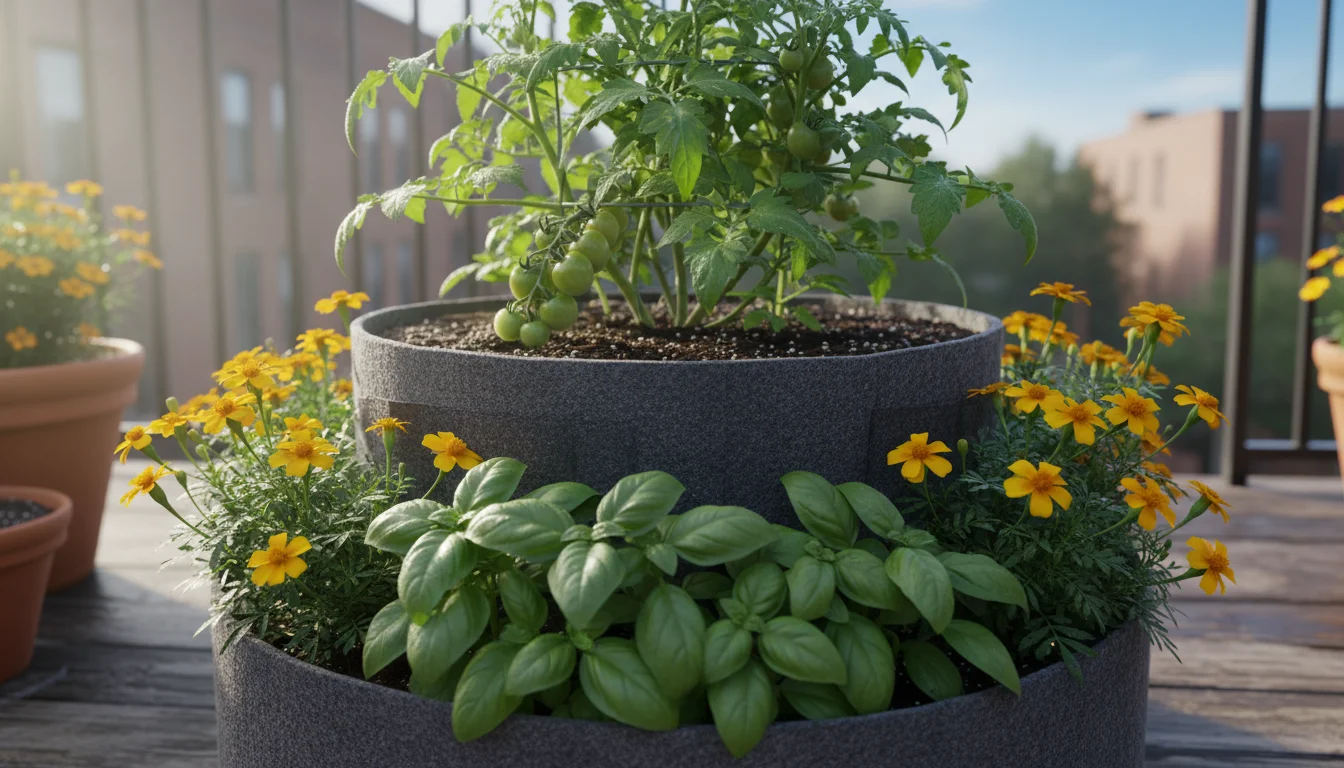
The Science Behind Herb Companions: How They Work
The concept of companion herbs is not mere folklore. Scientific research supports many of the observed benefits, revealing fascinating biological mechanisms at play. Understanding these processes helps you make informed choices about your garden plant pairing.
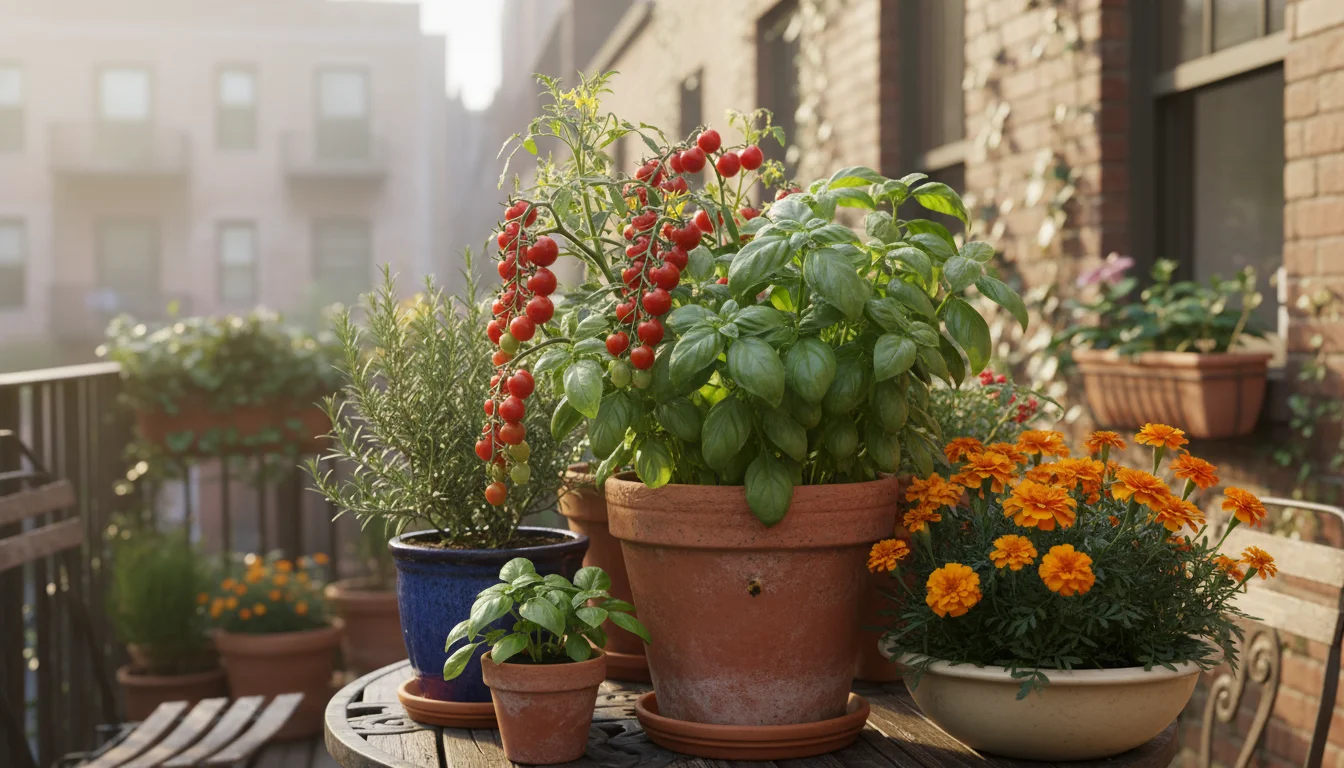
Pest Deterrence Through Aromatic Compounds
Many herbs contain volatile organic compounds (VOCs) that give them their distinctive aromas and flavors. These compounds, when released into the air or soil, can confuse or repel common vegetable pests. For example, the strong scent of basil can mask the alluring smell of tomatoes, making it harder for tomato hornworms or whiteflies to locate their host plant. Similarly, rosemary’s pungent odor deters bean beetles and carrot rust flies. The plants essentially create an aromatic shield around your valuable vegetables.
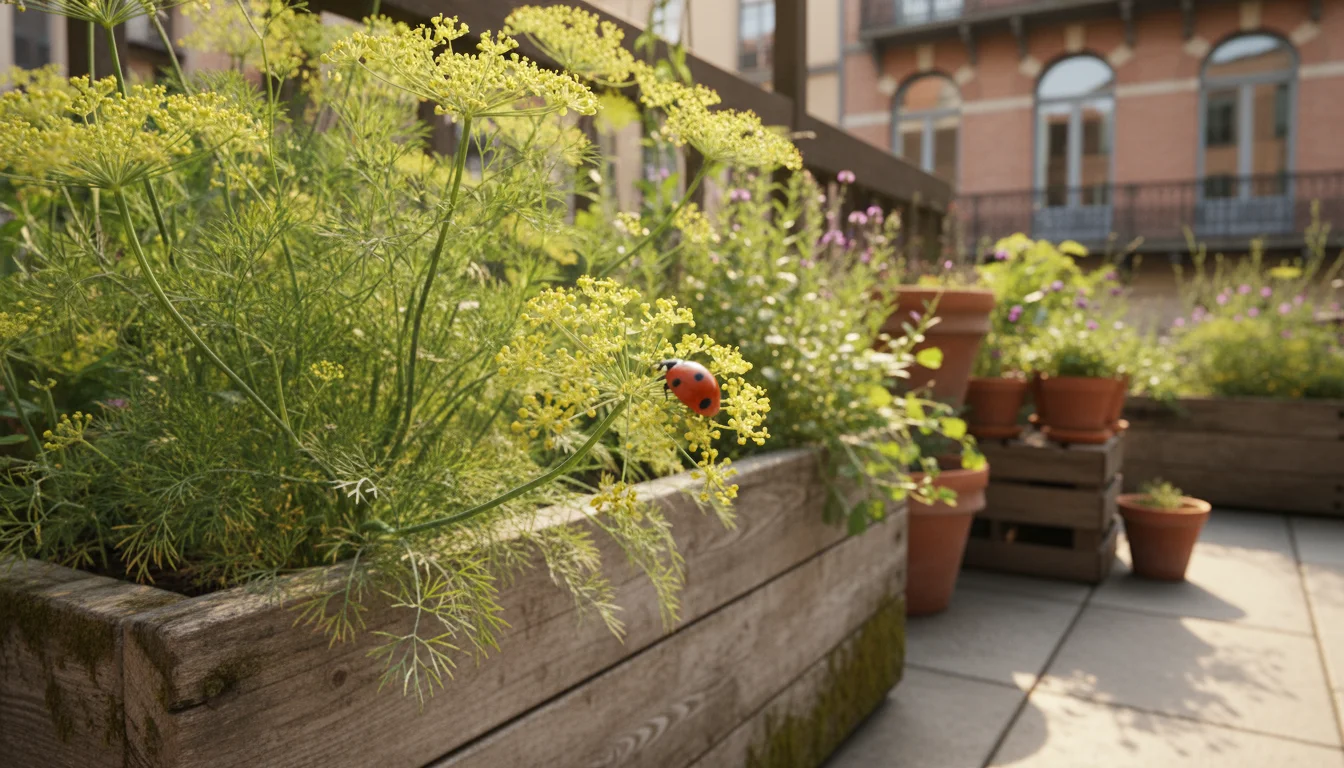
Attracting Beneficial Insects
Some companion herbs act as “nurse plants” by providing nectar and pollen sources for beneficial insects. These insects, such as ladybugs, lacewings, parasitic wasps, and hoverflies, are natural predators of common garden pests like aphids, mites, and caterpillars. Dill, cilantro, and parsley, when allowed to flower, produce umbelliferous blossoms that are particularly attractive to these helpful allies. You effectively set up a natural pest control squad in your garden.
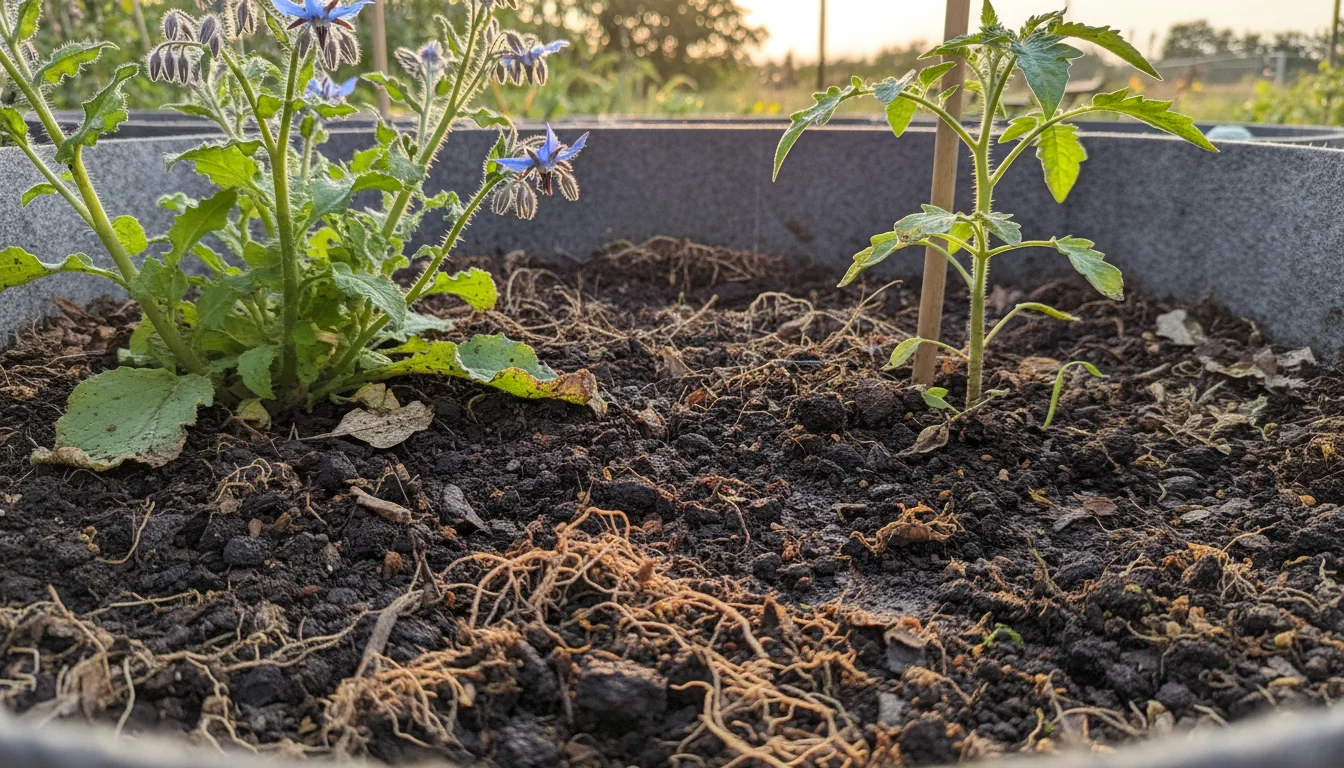
Improved Soil Health and Nutrient Cycling
Certain herbs contribute to soil health. Some, like borage (often grown with herbs and used similarly), can accumulate minerals from deeper in the soil and, upon decomposition, release them to shallower-rooted vegetables. Others, through their root exudates, might encourage beneficial soil microorganisms. While direct nutrient transfer from herbs to vegetables is less common than other benefits, the overall improvement in the soil ecosystem supports healthier roots for all plants.
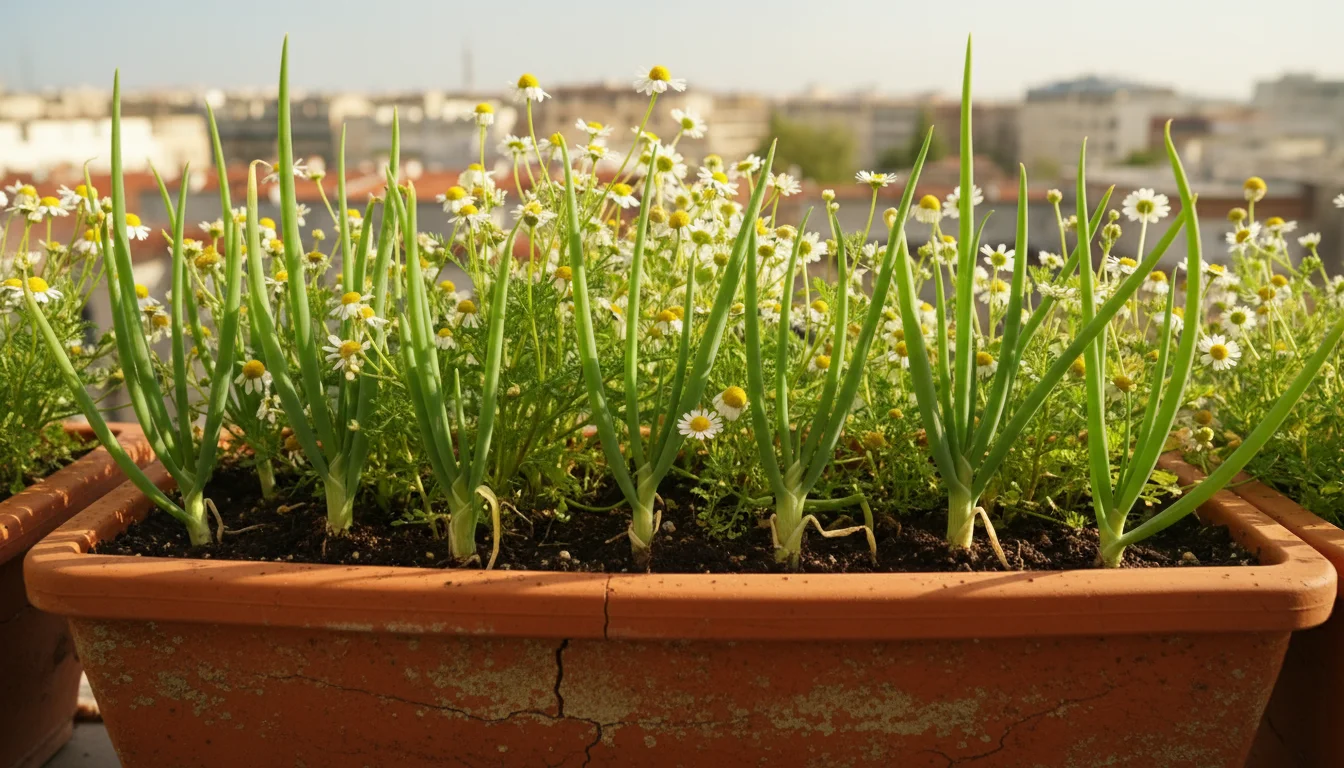
Allelopathy and Growth Enhancement
Allelopathy refers to the chemical interactions between plants. Some herbs release compounds that can inhibit the growth of weeds, creating less competition for your vegetables. Conversely, specific pairings can stimulate the growth of adjacent plants. For instance, studies suggest that planting chamomile near onions can enhance their flavor and vigor. These subtle chemical signals influence the growth and overall health of neighboring plants.
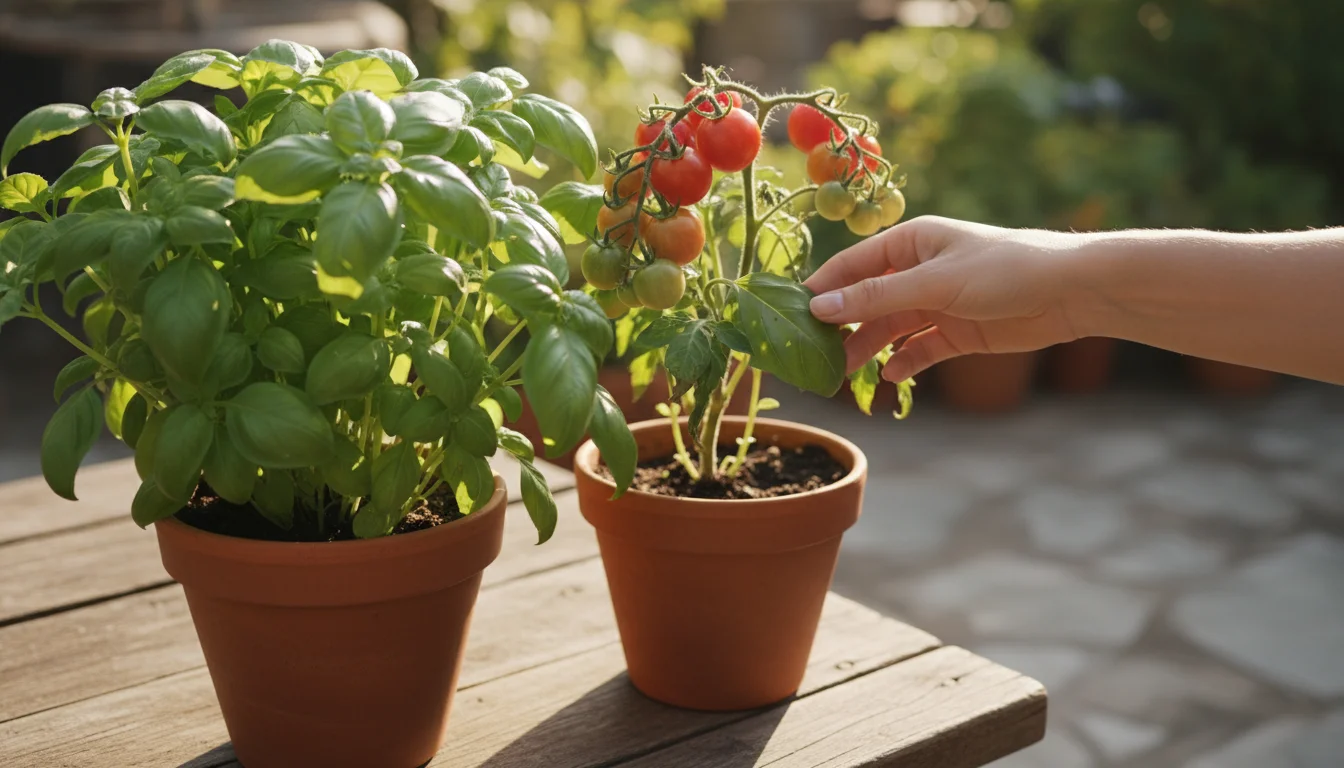
Flavor Enhancement
While harder to quantify scientifically, many gardeners report that certain companion plantings enhance the flavor of their vegetables. Planting basil near tomatoes, for example, is a widely celebrated pairing, with claims of sweeter, more aromatic tomatoes. This effect could be due to subtle changes in soil chemistry, nutrient uptake, or even stress reduction in the plants.
You can see that the benefits of using companion herbs are multifaceted and rooted in ecological principles. By strategically introducing these powerful plants, you create a more resilient, productive, and naturally balanced garden environment.
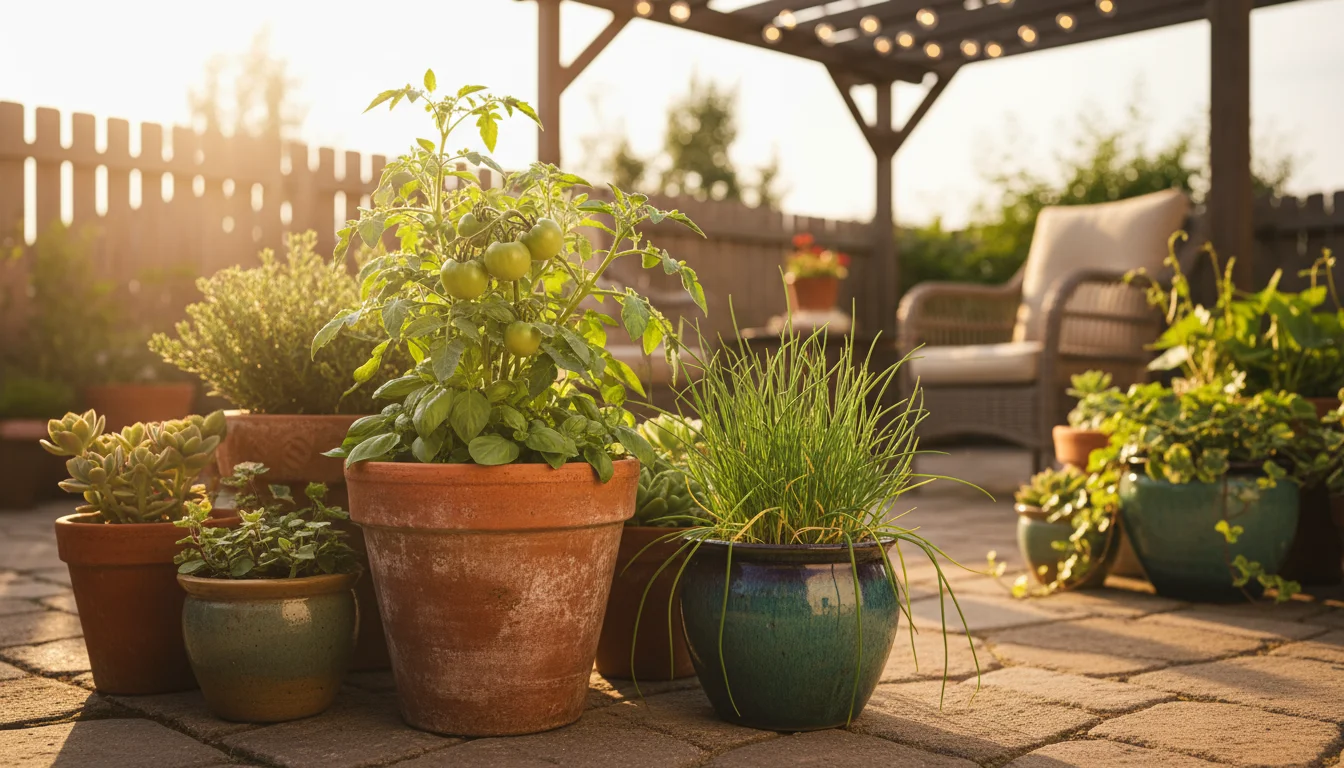
Top Herbs That Boost Vegetable Growth
Choosing the right companion herbs is crucial for maximizing benefits in your small garden. Focus on easy-to-grow varieties that offer multiple advantages. Here are some of the best herbs for vegetables, along with their primary contributions:
- Basil (Ocimum basilicum): A classic for good reason, basil is a powerhouse companion. Its strong aroma deters whiteflies, tomato hornworms, and thrips. Many gardeners believe it enhances the flavor of tomatoes and peppers.
- Chives (Allium schoenoprasum): As a member of the onion family, chives deter aphids, Japanese beetles, and carrot rust flies. They can also help prevent apple scab when planted near apple trees, though this is less relevant for most small-space vegetable gardeners.
- Cilantro/Coriander (Coriandrum sativum): When allowed to flower, cilantro’s delicate white blooms attract beneficial insects like hoverflies and parasitic wasps, which prey on aphids and other soft-bodied pests. Its strong scent may also deter spider mites.
- Dill (Anethum graveolens): Dill flowers are excellent for attracting beneficial predatory insects, including ladybugs and parasitic wasps. It also repels squash bugs and spider mites.
- Mint (Mentha spp.): Mint’s intense fragrance repels ants, aphids, flea beetles, and cabbage moths. However, mint is notoriously invasive. Plant it in pots to contain its roots, or choose a sterile variety if available.
- Oregano (Origanum vulgare): Oregano acts as a general pest deterrent and can repel cabbage moths. It makes a good groundcover, helping suppress weeds around larger plants.
- Parsley (Petroselinum crispum): Parsley attracts beneficial predatory insects, particularly hoverflies and parasitic wasps, when it flowers. Its aroma can also confuse asparagus beetles.
- Rosemary (Rosmarinus officinalis): Rosemary’s woody scent effectively deters several pests, including cabbage moths, carrot rust flies, and bean beetles. It also thrives in similar conditions to many vegetables, making it a good neighbor.
- Thyme (Thymus vulgaris): Thyme is a low-growing herb that deters cabbage worms and whiteflies. Its dense growth can also act as a living mulch, helping to suppress weeds and retain soil moisture.
You can see the variety of roles these companion herbs play. Each brings unique strengths to your garden. When selecting, consider your existing pest problems and the vegetables you plan to grow. You can then make targeted choices for the best garden plant pairing.
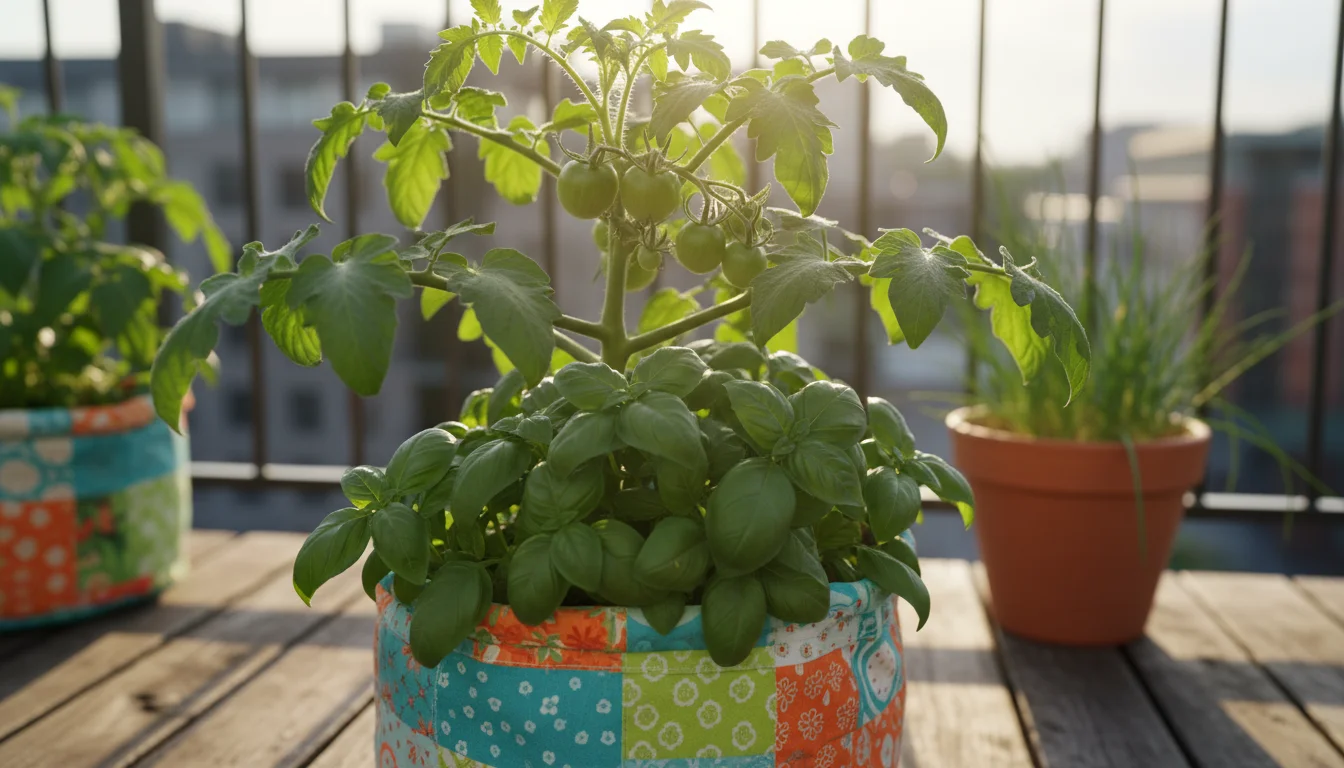
Strategic Pairings for Maximum Impact: Best Herbs for Vegetables
Now that you know the top companion herbs, let us explore specific partnerships that yield the greatest benefits for your vegetables. Remember, effective garden plant pairing considers both pest deterrence and growth enhancement.
| Companion Herb | Benefited Vegetables | Primary Benefits | Placement Tips (Small Spaces) |
|---|---|---|---|
| Basil | Tomatoes, Peppers, Lettuce, Asparagus | Deters whiteflies, tomato hornworms, thrips. Enhances flavor. | Plant directly at the base of tomato or pepper plants, or in an adjacent container. |
| Chives | Carrots, Tomatoes, Brassicas (cabbage, broccoli), Apples | Deters aphids, Japanese beetles, carrot rust flies. | Plant along rows of carrots, or at the base of tomatoes or brassicas in containers or beds. |
| Cilantro/Coriander | Potatoes, Anise, Dill, most Root Vegetables | Attracts beneficial insects (hoverflies, parasitic wasps). May deter spider mites. | Grow in separate containers near target plants, or intersperse lightly. Let some go to flower. |
| Dill | Cabbage, Lettuce, Corn, Cucumbers | Attracts beneficial insects (ladybugs, parasitic wasps). Repels squash bugs, spider mites. | Plant near brassicas or cucumbers. Allow it to flower for maximum insect attraction. |
| Mint | Cabbage, Tomatoes, Peppers, Carrots | Repels ants, aphids, flea beetles, cabbage moths. | Always plant in a separate, contained pot to prevent aggressive spreading. Place the pot near target vegetables. |
| Oregano | Cabbage, Grapes, most Brassicas | General pest deterrent, repels cabbage moths. Can act as a living mulch. | Plant around brassica plants in beds or containers. |
| Parsley | Asparagus, Corn, Tomatoes, Roses | Attracts beneficial insects (hoverflies, parasitic wasps). Confuses asparagus beetles. | Plant near asparagus, corn, or tomatoes. Allow some plants to flower. |
| Rosemary | Beans, Carrots, Cabbage, Sage | Deters cabbage moths, carrot rust flies, bean beetles. | Plant near beans, carrots, or brassicas. A good choice for arid or sunny spots. |
| Thyme | Cabbage, Potatoes, Tomatoes, Eggplant | Deters cabbage worms, whiteflies. Acts as a living mulch. | Plant as a border around beds or containers of brassicas or potatoes. |
You can mix and match these companion herbs based on your specific vegetable plan. For instance, if you struggle with cabbage worms, pairing thyme, oregano, and rosemary around your brassicas offers a multi-layered defense. If aphids plague your tomatoes, chives and basil provide a strong deterrent. You empower your garden with these thoughtful combinations.
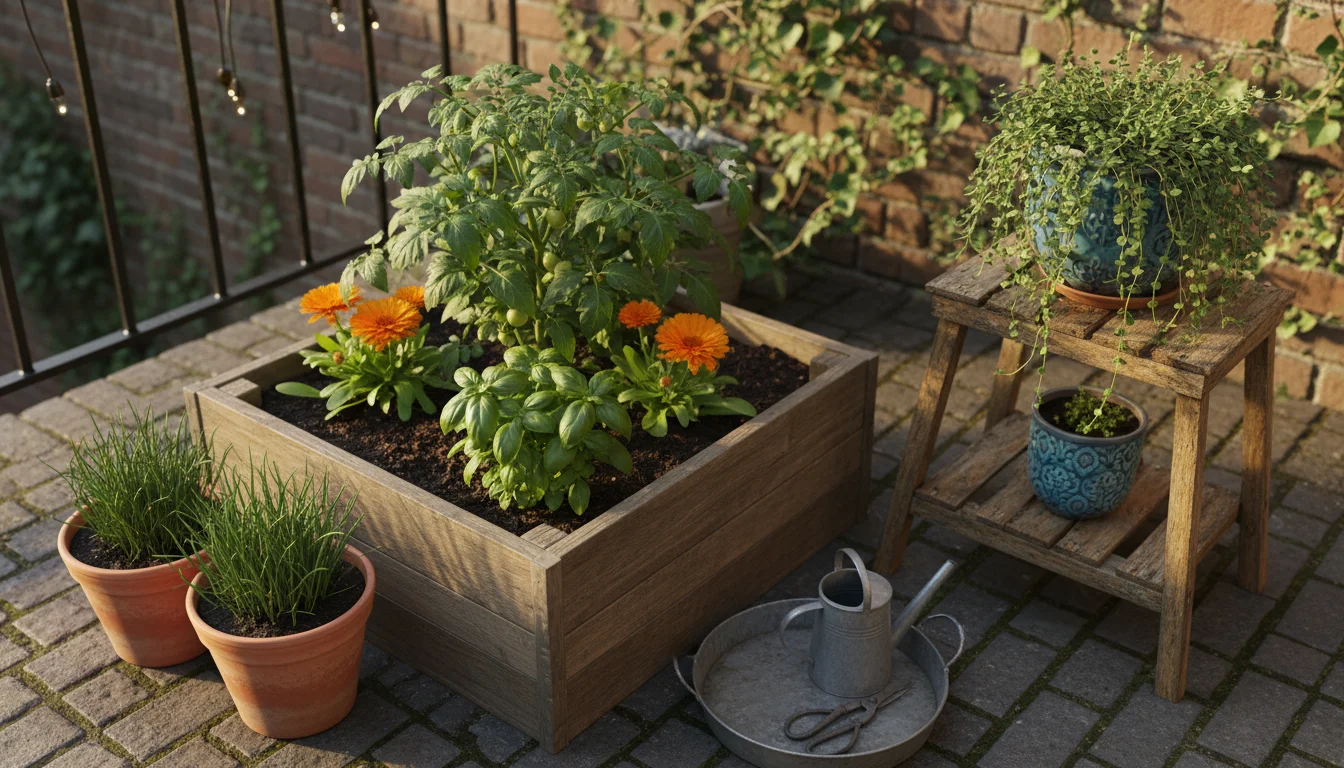
Integrating Herbs into Small Spaces: Container and Raised Bed Strategies
Small-space gardening, whether on a balcony, patio, or in compact raised beds, presents unique opportunities for integrating companion herbs effectively. You can achieve successful garden plant pairing even in limited areas by employing strategic placement and smart container choices.
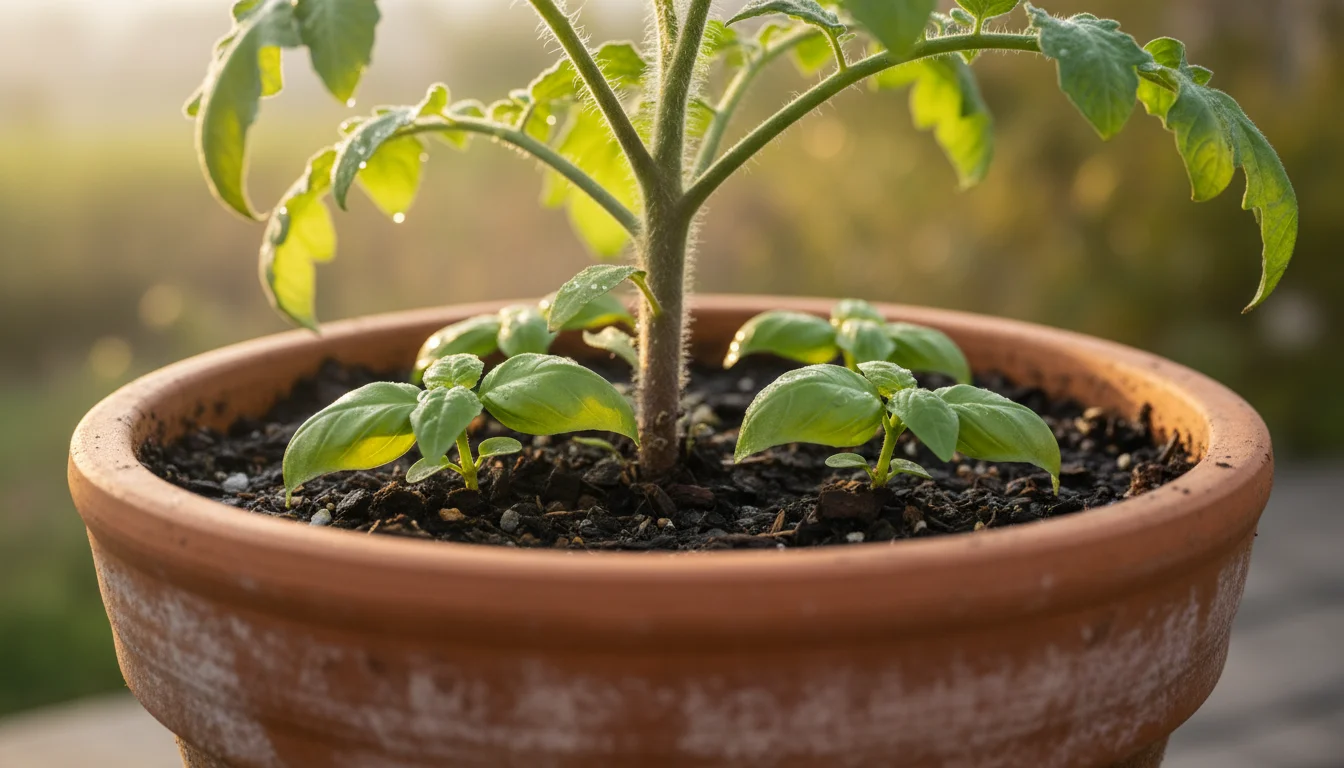
Shared Container Gardening
One of the easiest ways to incorporate companion herbs is to plant them directly in the same container as your vegetables. This works particularly well for plants with similar light and water requirements. For example, a large container holding a determinate tomato variety can also host basil at its base. The basil benefits from the tomato’s shade during the hottest part of the day, and its aroma deters tomato pests.
- Tomatoes and Basil: Plant one basil plant for every tomato plant, slightly offset from the tomato stem.
- Peppers and Chives/Oregano: Place chives or oregano around the base of pepper plants.
- Cabbage/Broccoli and Thyme/Oregano: Plant low-growing thyme or oregano as a living mulch around your brassicas in a large container or raised bed.
- Lettuce and Dill/Cilantro: In a wide, shallow container, plant lettuce and intersperse dill or cilantro. Harvest the lettuce regularly and allow some dill or cilantro to bolt and flower to attract beneficials.
When sharing containers, always ensure the container provides enough space and soil volume for both plants to thrive. A general rule of thumb for most vegetables is to choose containers that hold at least 5 gallons of potting mix per plant. For companion herbs, a 1-2 gallon pot is often sufficient if they are alone, but if sharing, ensure the main vegetable has ample room.
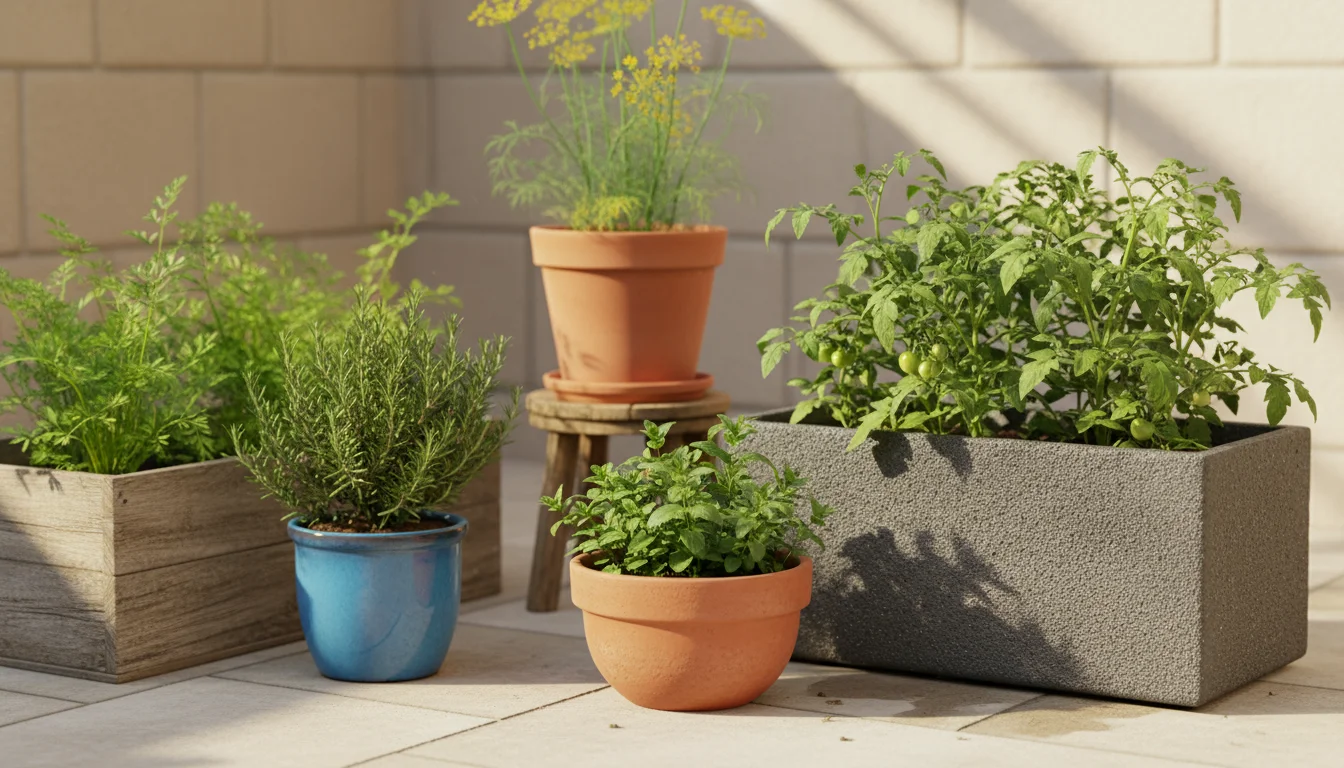
Adjacent Container Placement
If you prefer to keep your plants separate or if an herb has different water or light needs, place a potted herb next to its vegetable companion. This strategy is essential for invasive herbs like mint. You can also move these pots around to optimize conditions or provide temporary pest deterrence.
- Mint in a Pot: Place a potted mint plant next to your cabbage, tomatoes, or peppers to repel pests without worrying about its roots taking over.
- Rosemary for Beans/Carrots: A potted rosemary can sit directly adjacent to a container of bush beans or a trough of carrots.
- Dill/Cilantro for Pollinators: Keep flowering dill or cilantro in a separate pot near your squash, cucumbers, or fruiting plants to attract pollinators.
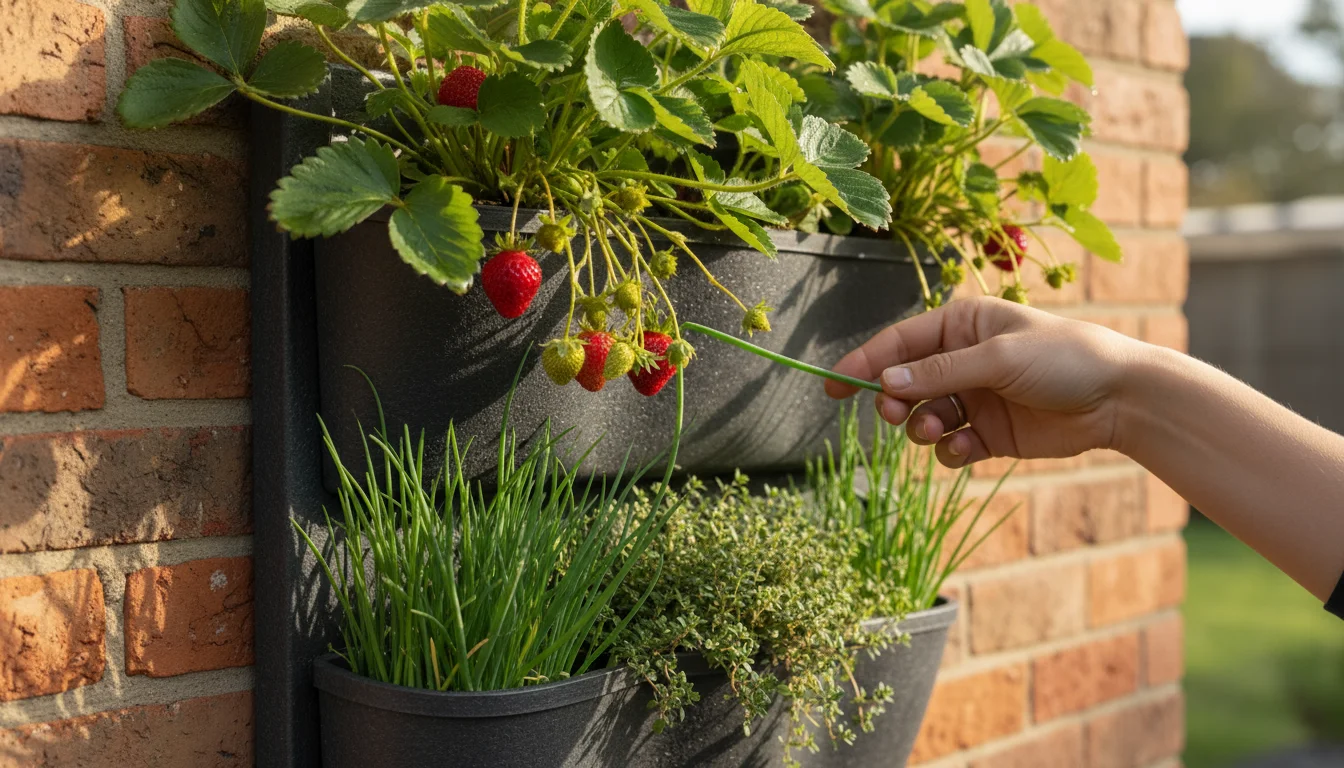
Vertical Gardening with Herbs
Vertical planters are excellent for small spaces and can integrate companion herbs. You can plant vining vegetables like pole beans or cucumbers to grow upwards, while tucking herbs into pockets below or adjacent to the climbing plants. For example, a vertical planter for strawberries could have thyme or chives planted in lower pockets to offer some pest deterrence.
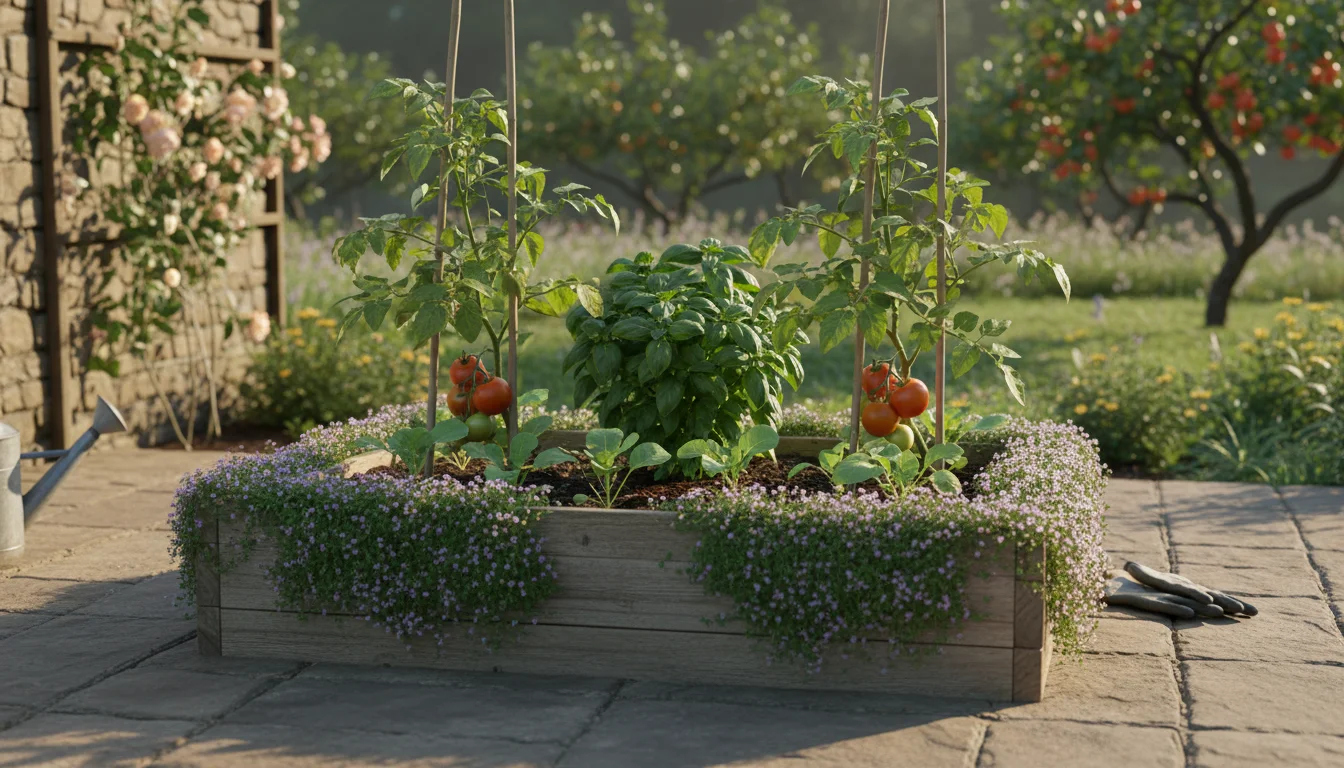
Raised Bed Organization
In raised beds, you have more flexibility. You can create rows of vegetables and intersperse herbs, or use herbs as borders. For example, plant a border of thyme or oregano around your brassicas or potatoes. Place basil plants strategically between tomato plants. This close proximity ensures the aromatic compounds from the herbs effectively reach their vegetable partners.
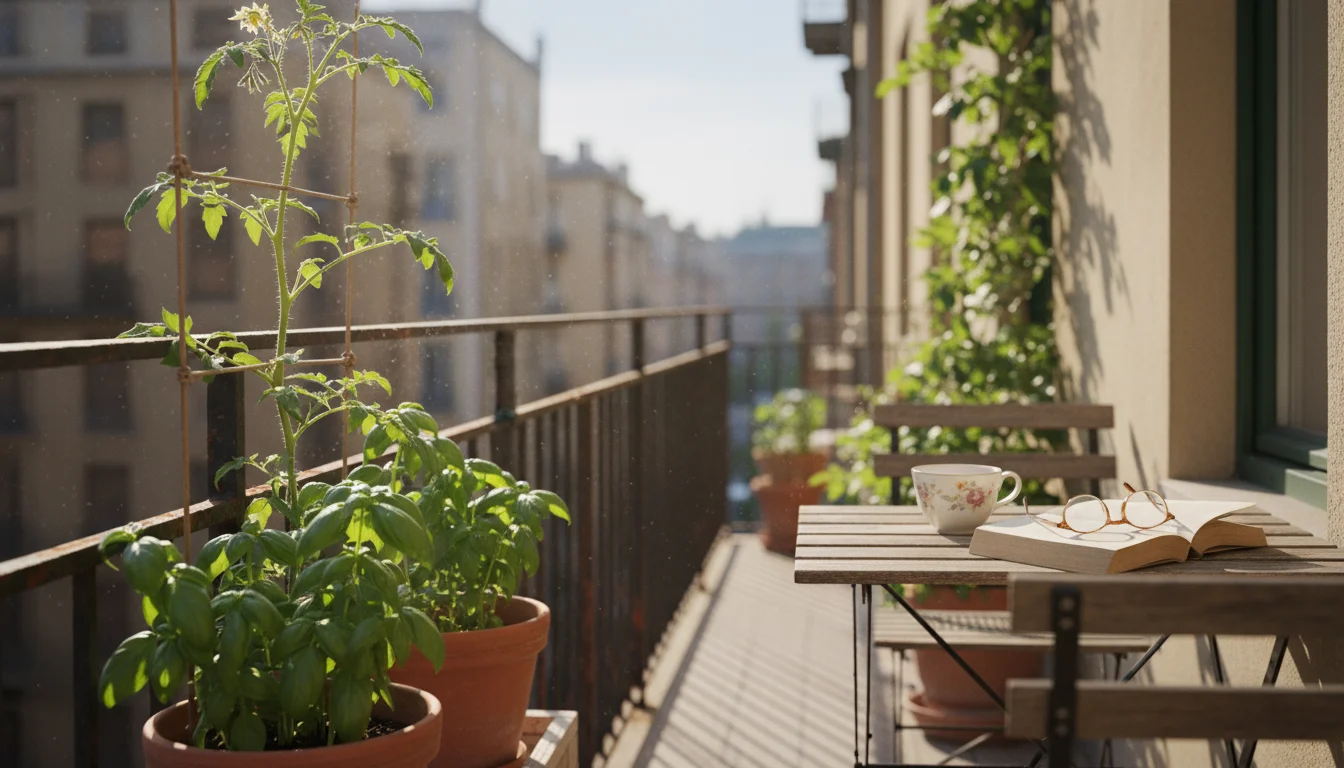
Considering Light and Water Needs
When designing your small-space garden, always consider the light and water requirements of both the herb and the vegetable. Most herbs thrive in full sun (6+ hours per day), similar to many common vegetables like tomatoes, peppers, and beans. However, some herbs, like parsley or cilantro, appreciate a little afternoon shade in very hot climates. Group plants with similar needs together to simplify watering and care.
For research-based guidance on edible gardening, visit
Cornell Garden-Based Learning,
UF/IFAS Gardening Solutions,
Penn State Extension – Gardening and
Missouri Botanical Garden.
You can see that even with limited room, you have many options for incorporating these beneficial companion herbs. Thoughtful placement makes all the difference in creating a synergistic garden.
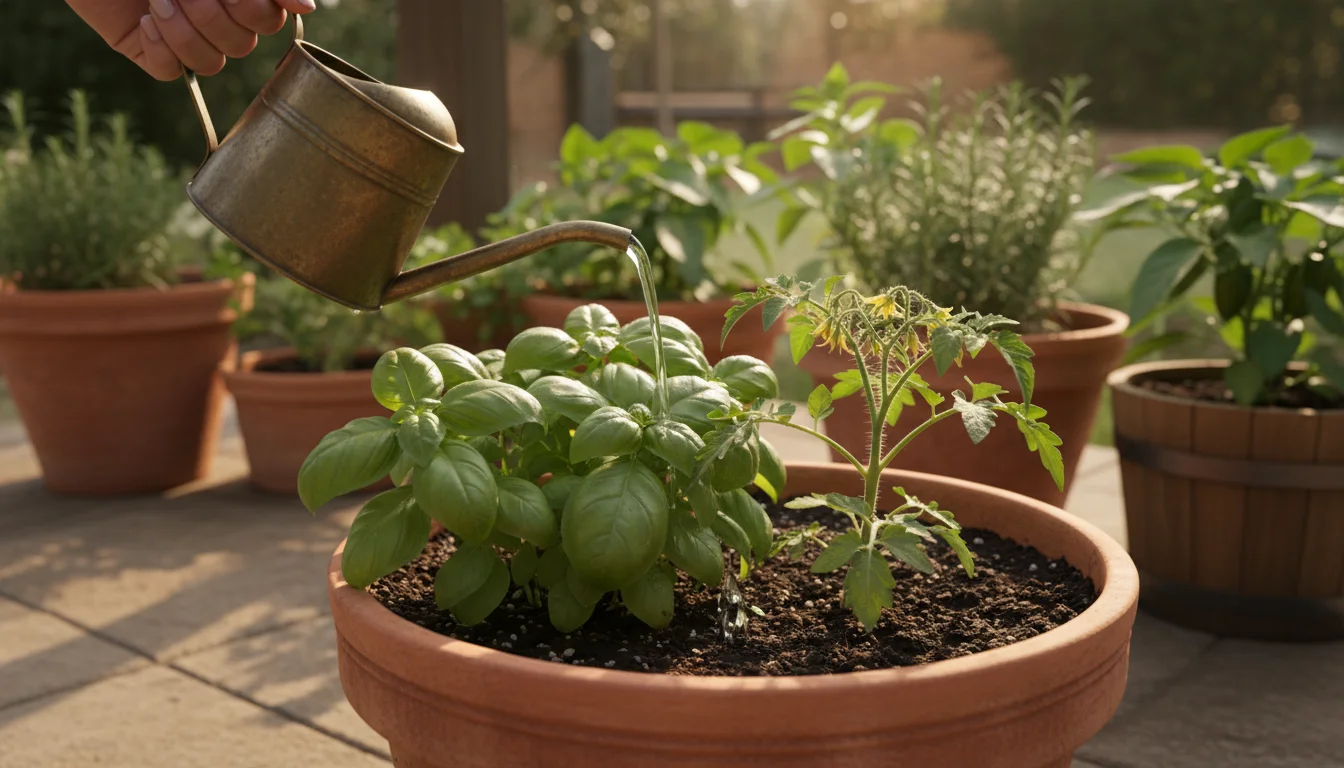
Cultivating and Caring for Your Companion Herbs
Integrating companion herbs into your garden is easy, but proper care ensures they remain healthy and effective. You want your herbs to thrive so they can actively contribute to your vegetable growth. This section covers planting, soil, watering, and feeding, emphasizing sustainable practices for your small-space garden.
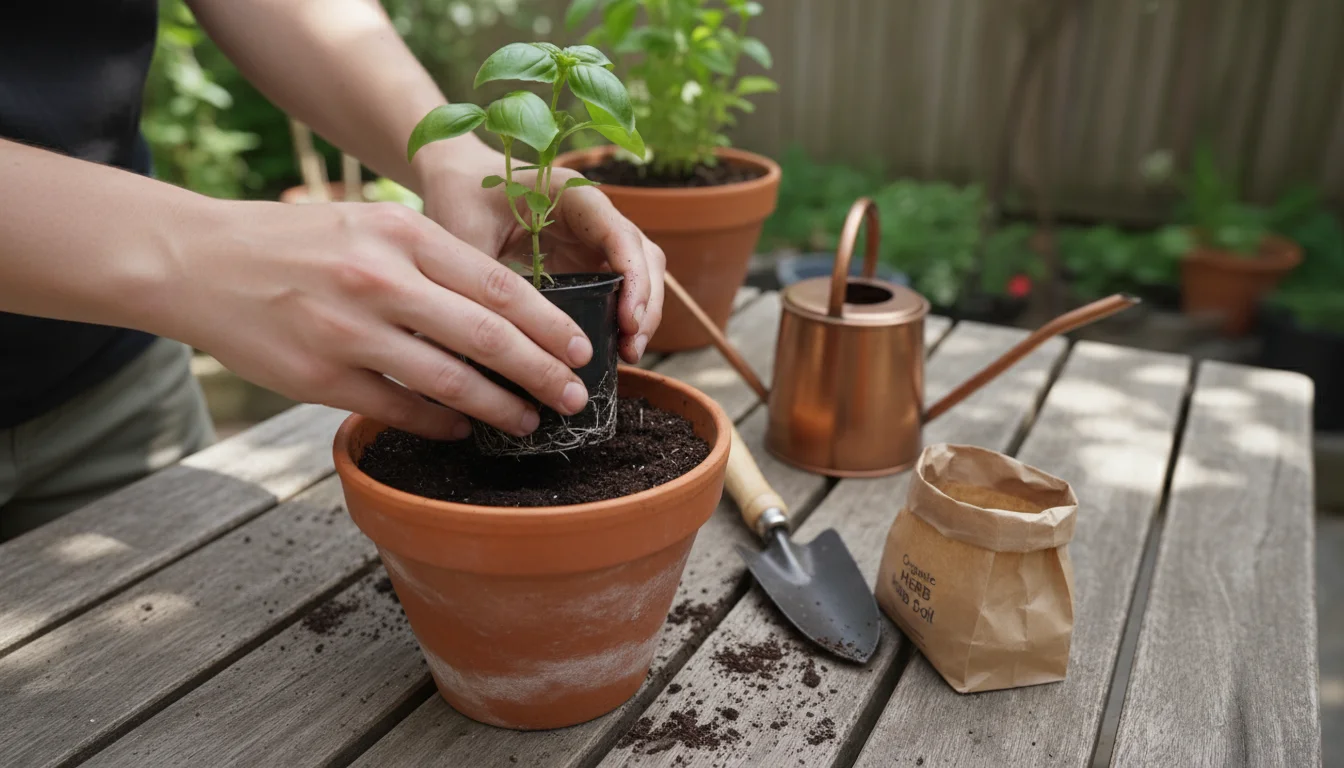
Planting Your Herbs
You can start most herbs from seed or purchase young plants from a nursery. Starting from seed is economical and offers a wider variety, but requires more time and attention. Young plants provide an instant solution and are often the best choice for small-space gardeners looking for quick results.
- Sowing Seeds: Read seed packets carefully for planting depth and spacing. Many herbs, like basil, dill, and cilantro, germinate readily from seed. Sow them directly into your containers or garden beds after the last frost, or start them indoors 4-6 weeks before transplanting.
- Transplanting Young Plants: When you transplant, gently remove the herb from its nursery pot. Loosen any circling roots at the bottom. Dig a hole just deep enough for the plant’s root ball, ensuring the top of the root ball sits even with the soil surface. Water thoroughly after planting.
If you are interplanting herbs with vegetables, consider the growth habits. Plant bushier herbs like basil or rosemary a few inches from the main stem of a tomato or pepper to allow air circulation. Low-growing herbs like thyme can spread around the base of larger plants.
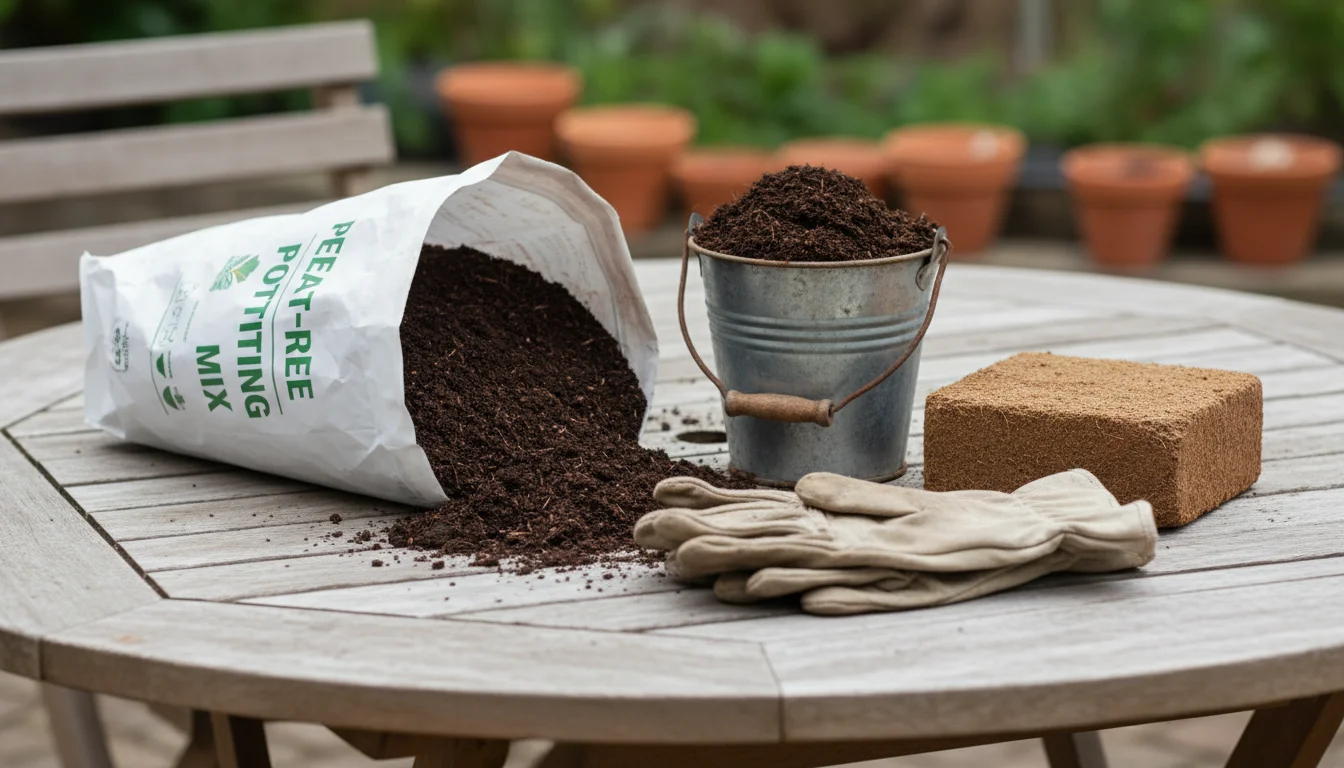
Potting Mix and Soil Health
The foundation of any healthy garden, especially in containers, is excellent soil. Use a high-quality, peat-free potting mix. Peat mining is environmentally destructive, so opting for alternatives like coir, compost, and aged pine bark supports more sustainable practices.
A good potting mix provides drainage, aeration, and nutrients. When filling containers or raised beds, ensure you have a minimum of 6-8 inches of soil for most herbs, and significantly more for deep-rooted vegetables (12-18 inches for tomatoes, for example). You can amend your potting mix with compost to boost its fertility and microbial activity. Compost enriches the soil, improves drainage, and helps retain moisture, all vital for container gardening.
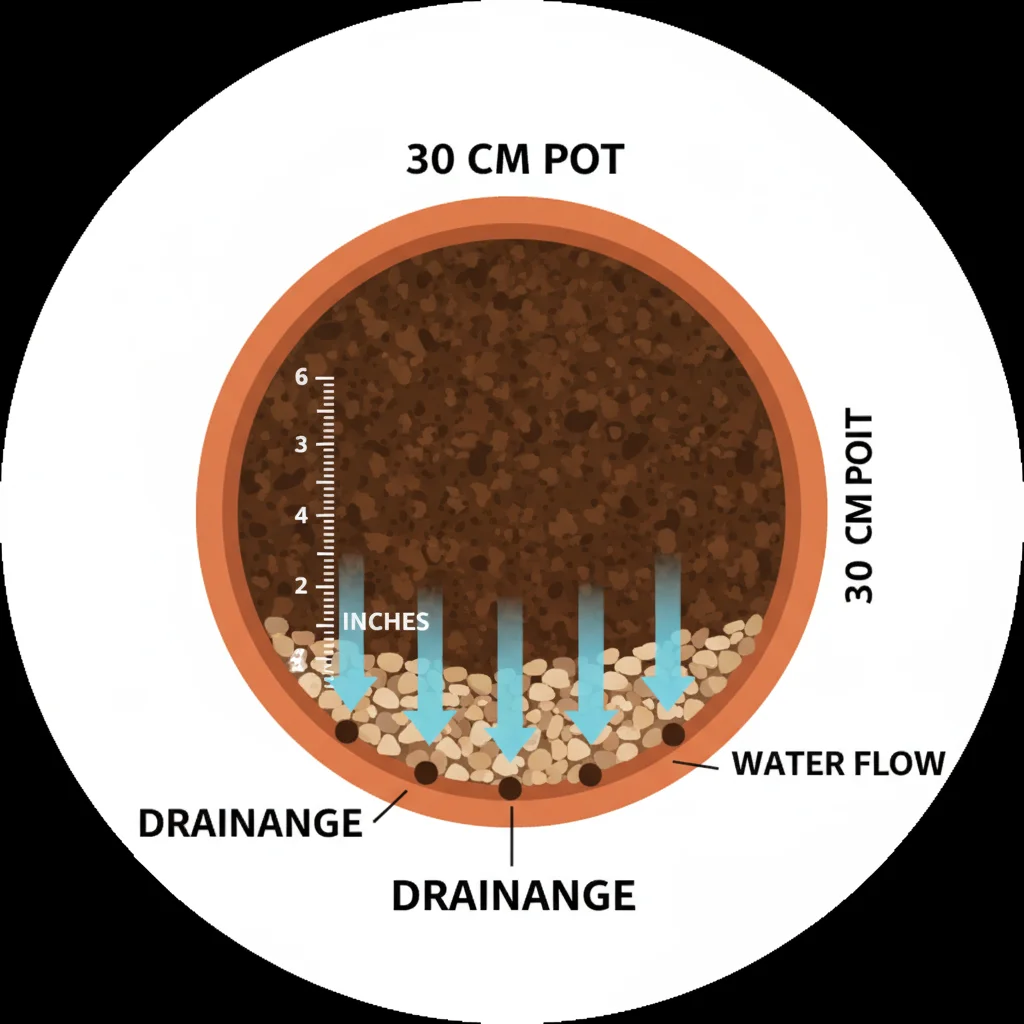
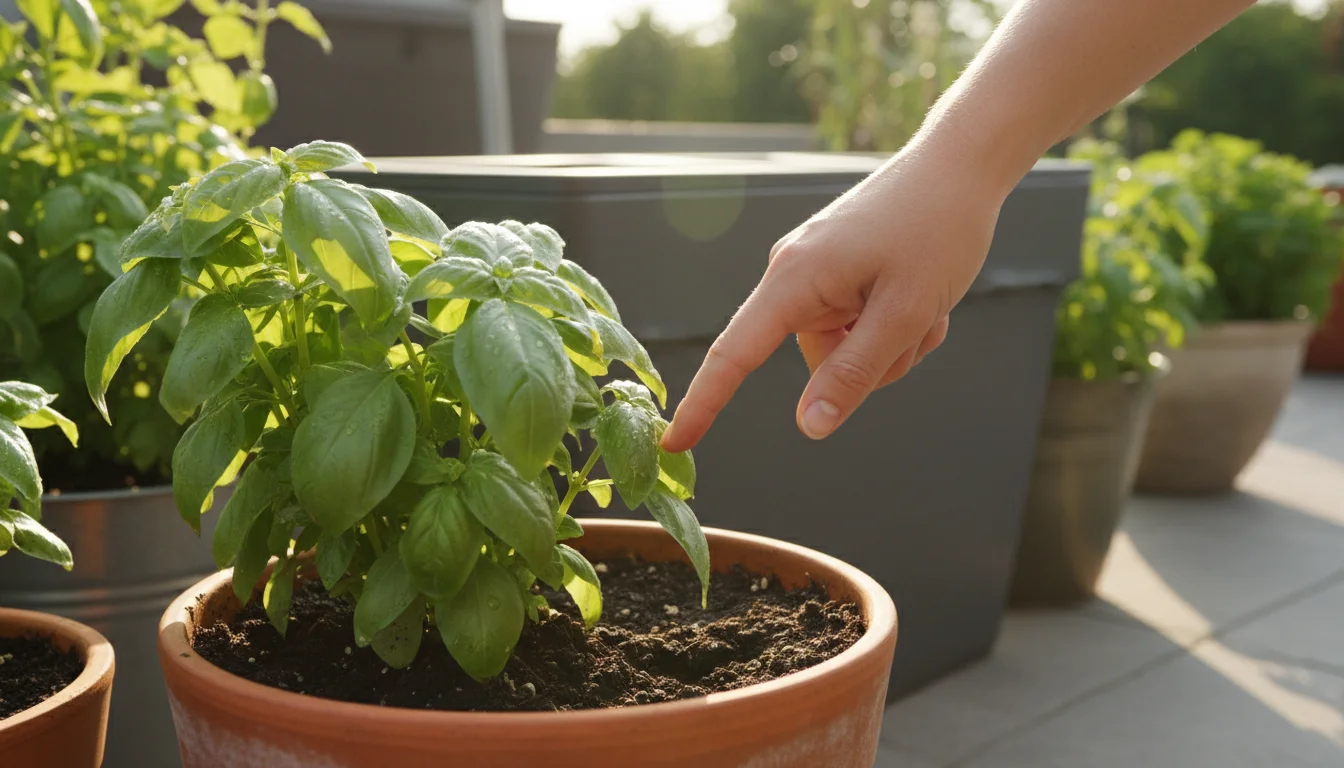
Efficient Watering
Container gardens dry out faster than in-ground beds, so consistent watering is crucial. Most herbs prefer consistently moist but not waterlogged soil. Stick your finger an inch or two into the soil; if it feels dry, it is time to water. Water deeply until you see water draining from the bottom of the pot. This encourages roots to grow deeper, making the plant more resilient.
- Morning Watering: Water in the morning to allow foliage to dry before nightfall, which reduces the risk of fungal diseases.
- Wicking Systems: For busy gardeners, consider self-watering containers or wicking systems. These systems provide a continuous water supply to the plant roots, reducing the frequency of manual watering. They are especially beneficial for moisture-loving herbs like basil.
- Rain Barrels: Collect rainwater in rain barrels for an environmentally friendly watering source. Rainwater is naturally soft and free of chlorine, which plants appreciate.
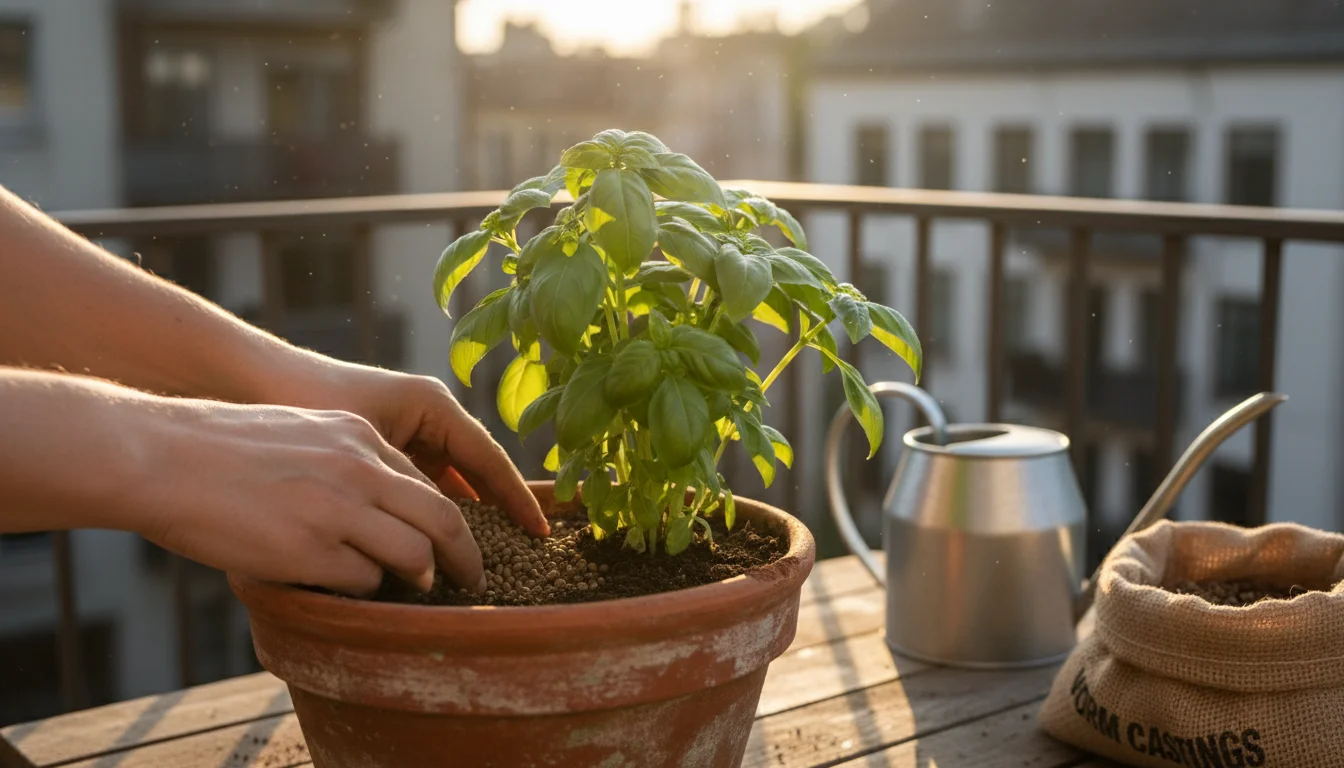
Organic Fertilizing
Most herbs are not heavy feeders, especially once established. However, in containers, nutrients leach out faster. A balanced organic liquid fertilizer (like a fish emulsion or seaweed extract) applied every 2-4 weeks during the growing season gives your herbs a gentle boost. Follow package directions for dilution rates.
For a slow-release option, mix a handful of organic granular fertilizer or worm castings into the top few inches of soil at the beginning of the season. This provides a steady supply of nutrients as the herbs grow. Avoid over-fertilizing, as this can lead to lush foliage but diminished flavor in some herbs.
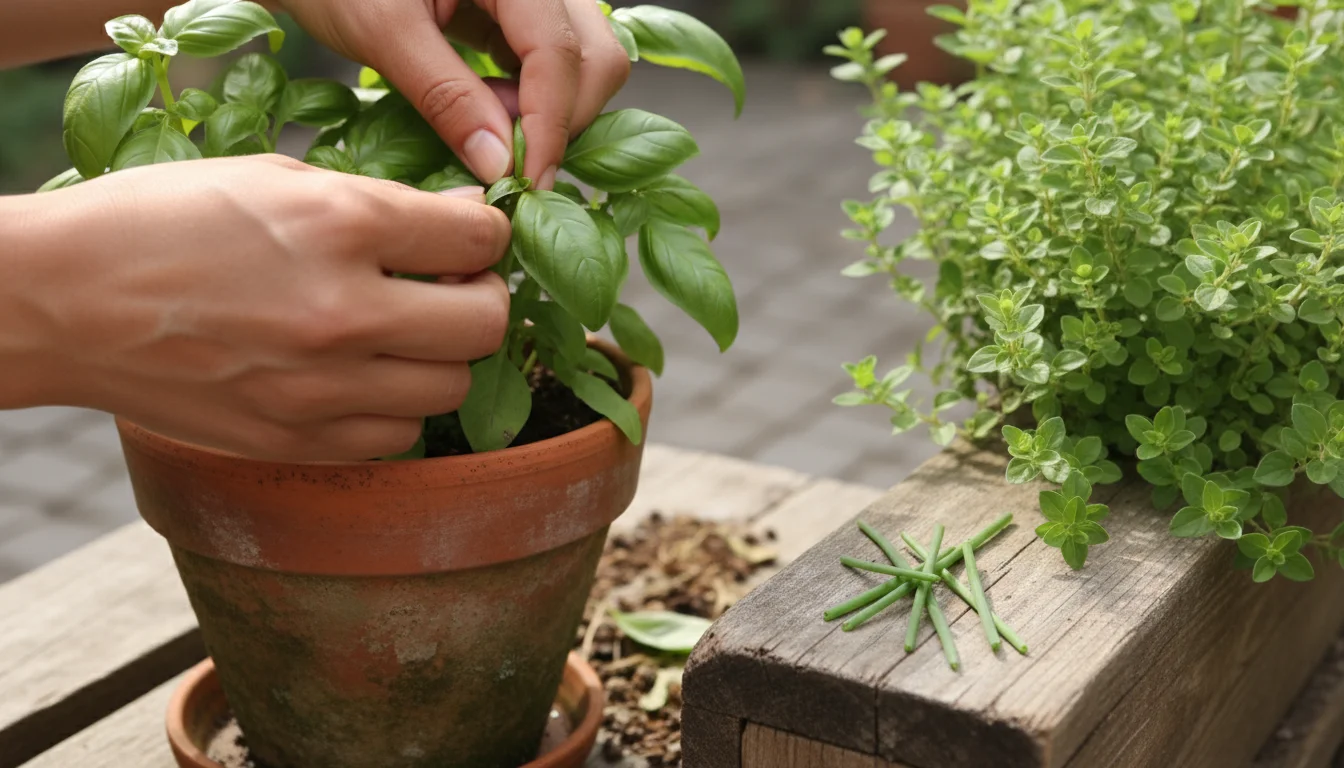
Pruning and Harvesting for Vigor
Regular harvesting encourages bushier growth and prevents herbs from “bolting” (going to flower and seed prematurely). Pinch back basil, mint, and oregano regularly. For chives, dill, and cilantro, snip off outer leaves. Removing flowers from many herbs (unless you want them for beneficial insect attraction or seeds) redirects the plant’s energy into producing more flavorful leaves.
By providing consistent care, you ensure your companion herbs remain vigorous partners in your vegetable garden, actively contributing to pest control, beneficial insect attraction, and overall plant health. You will see the difference in your robust vegetable growth.
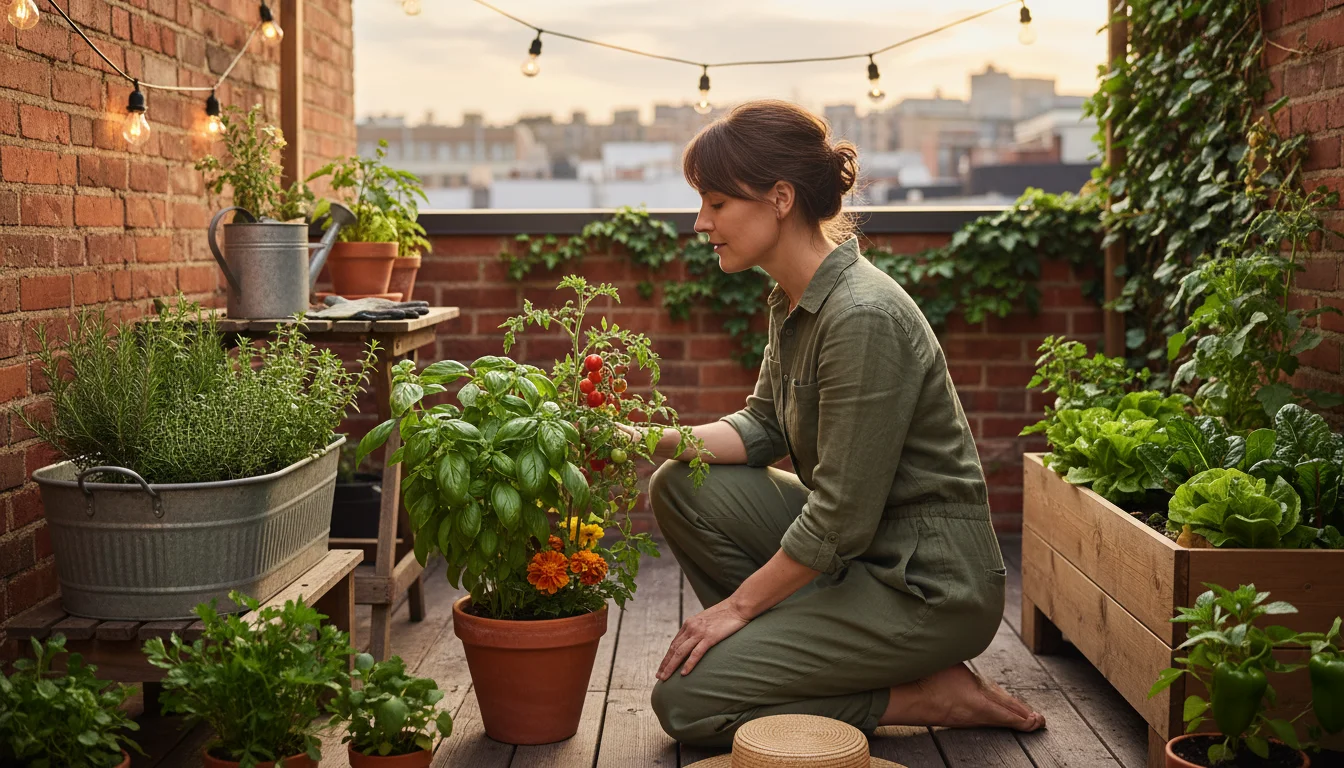
Addressing Challenges and Optimizing Your Pairings
While companion herbs offer numerous advantages, understanding potential challenges and optimizing your garden plant pairing ensures the best results. You can fine-tune your strategy with a bit of observation and adjustment.
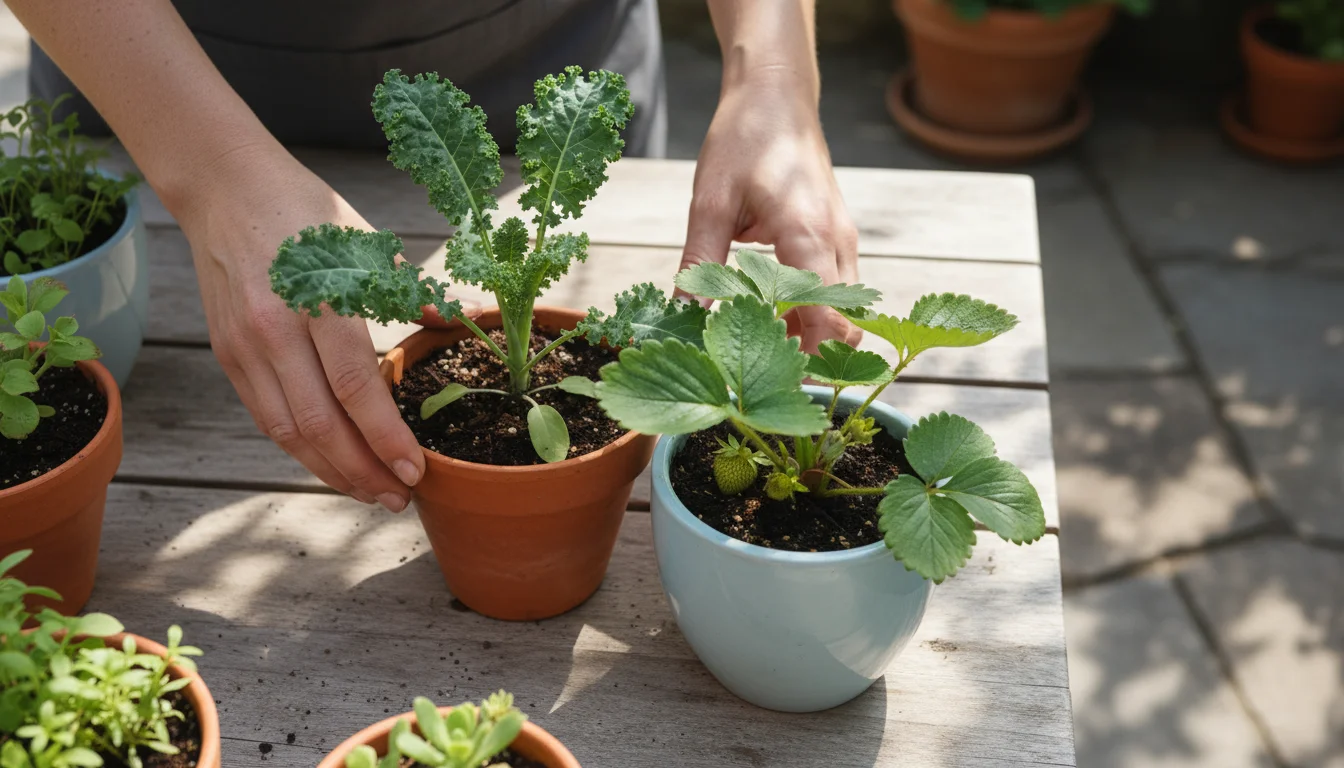
Not All Pairings Work
Just as some plants thrive together, others do not. For example, dill and carrots are good companions, but dill can inhibit the growth of peppers and caraway. Similarly, members of the brassica family (cabbage, broccoli, kale) often dislike growing near strawberries. While focusing on the positive interactions is essential, briefly acknowledging incompatible pairings prevents disappointment. Always research specific plant needs and preferences if you are unsure.
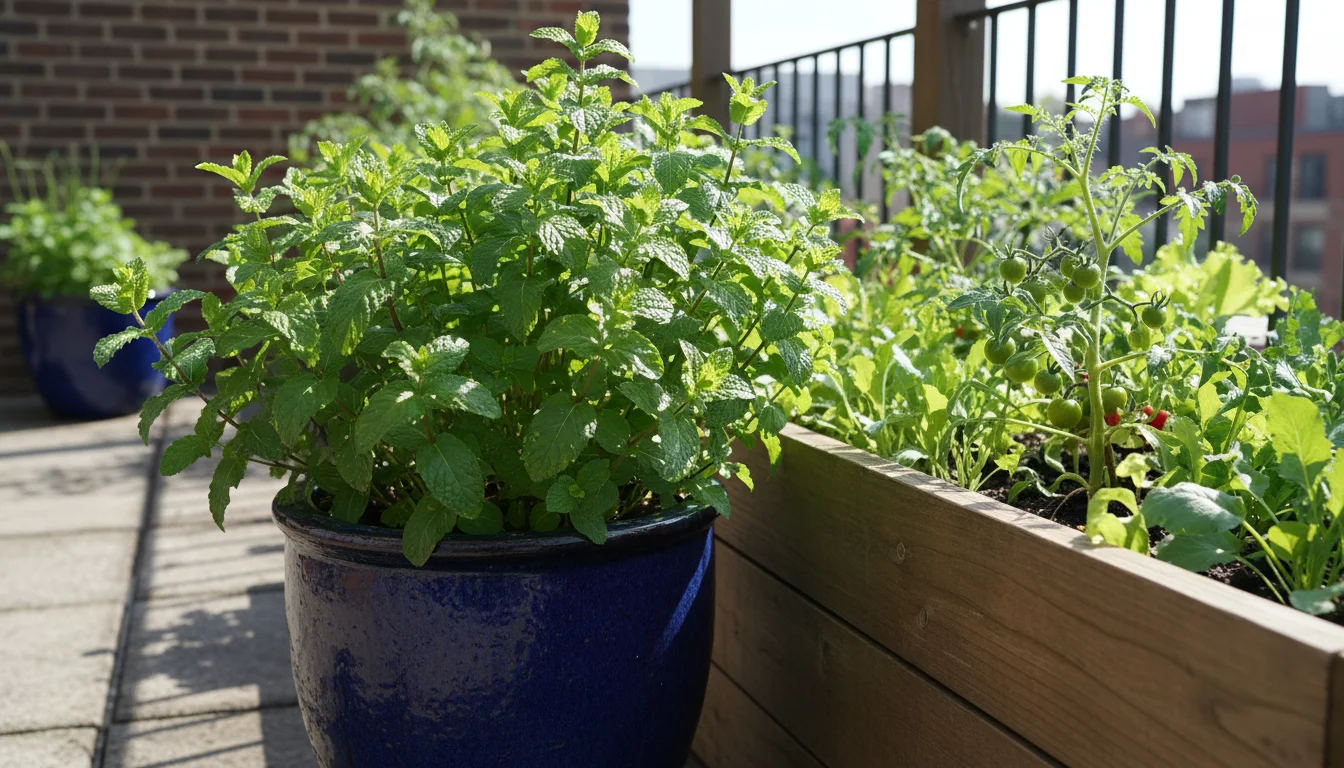
Managing Invasive Herbs
Mint stands out as a powerful companion herb for deterring pests, but its aggressive root system is a major challenge. You must always plant mint in a contained environment, such as a sturdy pot with drainage holes, if you place it near other plants. Even then, its runners can sometimes escape. Bury the pot directly in a raised bed, or keep it as a standalone container adjacent to your vegetables. This keeps the benefits without the takeover.
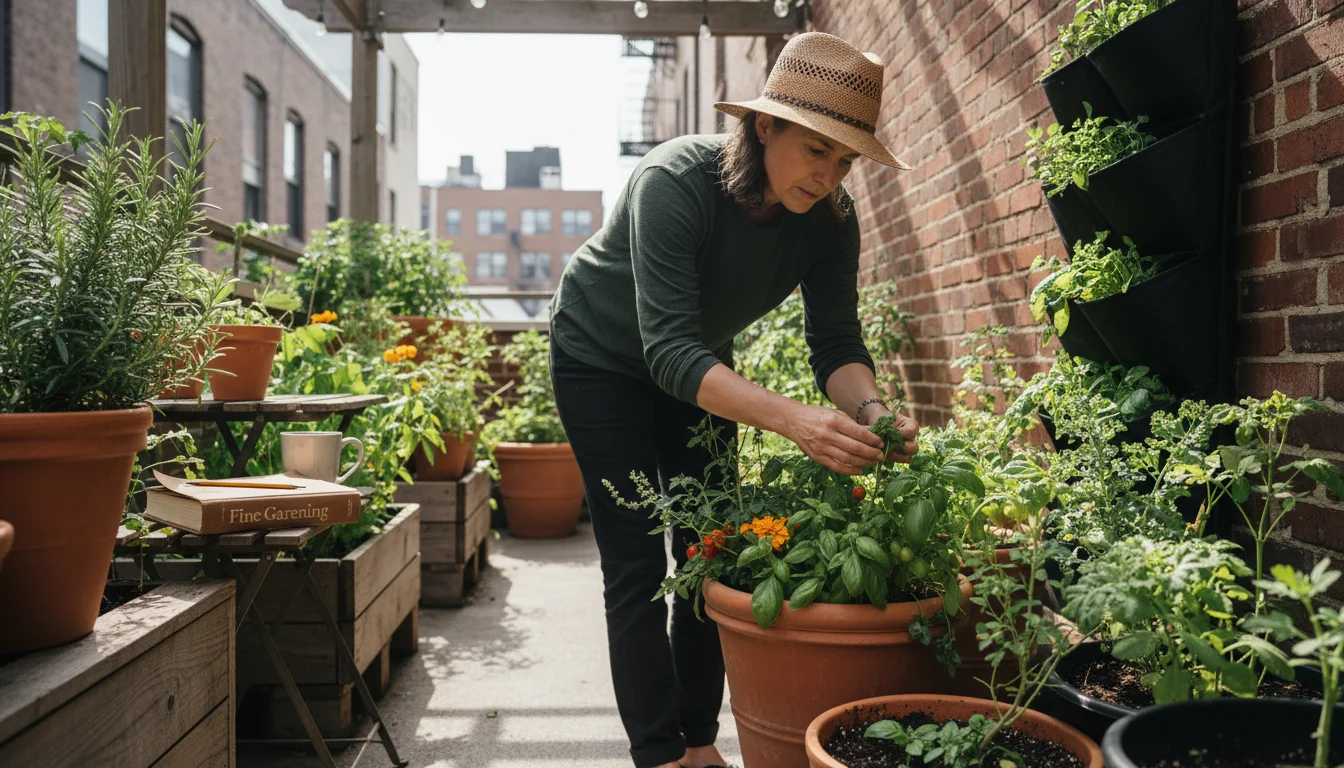
Observing Your Garden
Your garden is a living laboratory. You are the chief observer. Pay attention to how your plants interact.
- Pest Activity: Do you see fewer aphids on the tomatoes next to the basil? Is your cabbage less bothered by worms when rosemary is nearby?
- Plant Vigor: Do certain vegetable plants seem more robust and healthy when paired with specific herbs?
- Growth Patterns: Ensure that one plant is not overshadowing or outcompeting its companion for light, water, or nutrients. You might need to adjust spacing or pruning.
Take notes in a gardening journal. This personal data helps you refine your companion planting strategies year after year, tailoring them to your specific microclimate and garden setup. What works perfectly for one gardener might need slight tweaks for you.
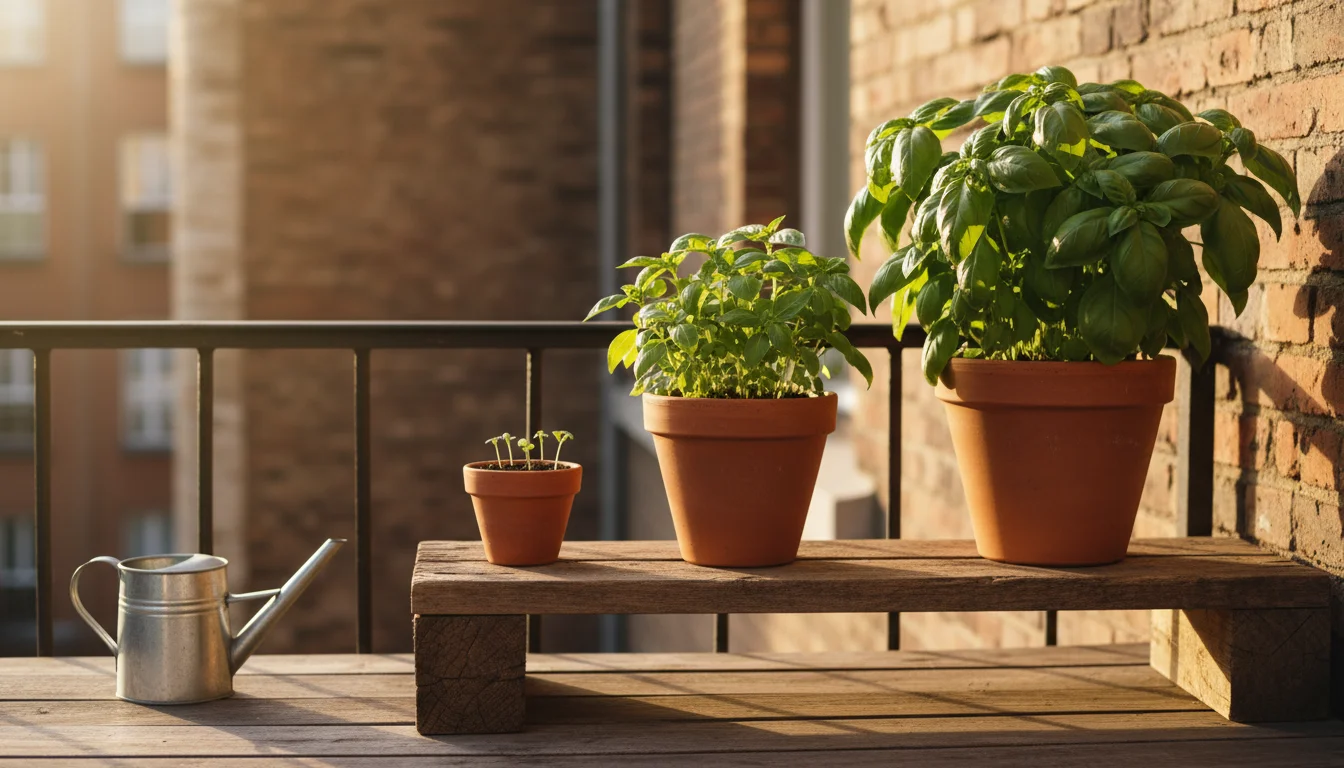
Succession Planting Herbs
For annual herbs like basil, cilantro, and dill, you can employ succession sowing to ensure a continuous supply of fresh leaves and pest-deterring power. Succession sowing means planting small batches of seeds or seedlings every couple of weeks. For example, instead of planting all your basil at once, plant a few seeds every three weeks from spring through mid-summer. This provides a constant source of young, vigorous plants that deter pests and provide fresh culinary herbs. As older plants bolt or become leggy, you can easily replace them with younger ones.
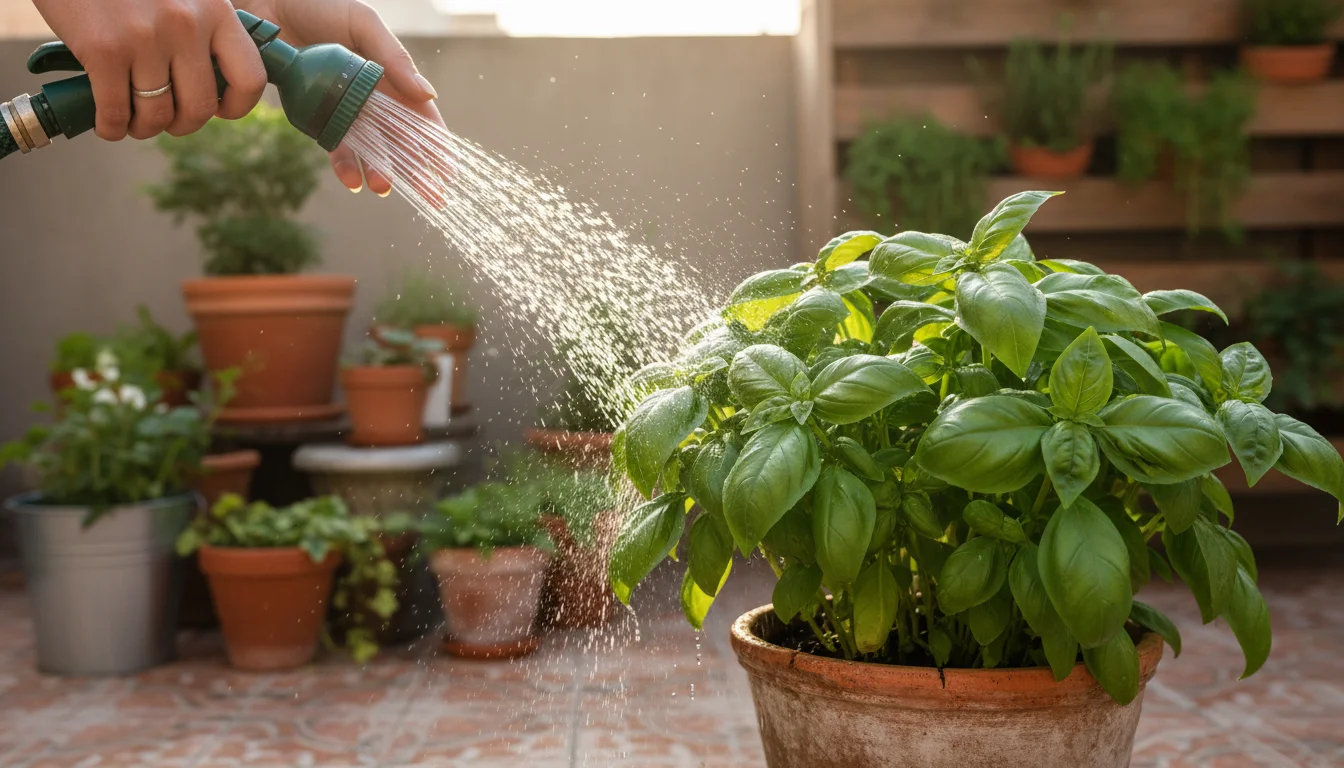
Integrating with Other IPM Strategies
Companion herbs are a powerful tool within an Integrated Pest Management (IPM) framework. IPM focuses on prevention, monitoring, and using the least toxic controls first. Companion planting serves as an excellent preventative measure. However, it is rarely a magic bullet. If pest pressure is high, you might still need to implement other strategies:
- Hand Picking: Manually remove larger pests like tomato hornworms or squash bugs.
- Hosing Off: A strong spray of water dislodges aphids and spider mites.
- Organic Sprays: Use insecticidal soap or neem oil for persistent infestations, following label directions carefully.
You empower your garden by combining the natural benefits of companion herbs with a watchful eye and a readiness to intervene responsibly when needed. This holistic approach builds resilience and reduces your overall gardening workload.
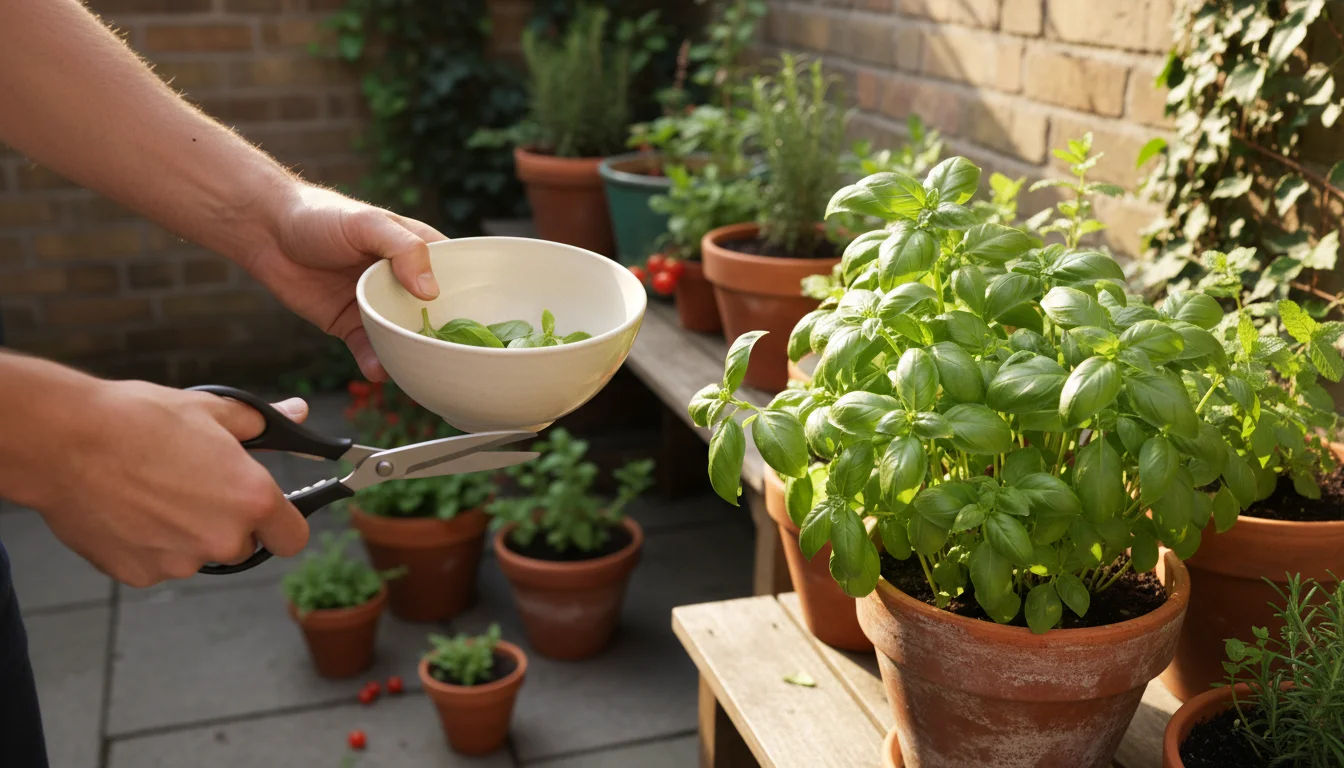
Harvesting and Enjoying Your Bountiful Harvest
Your companion herbs do more than just protect and nourish your vegetables; they provide a continuous supply of fresh, flavorful additions to your kitchen. Proper harvesting techniques ensure both culinary enjoyment and continued vigor for your plants.
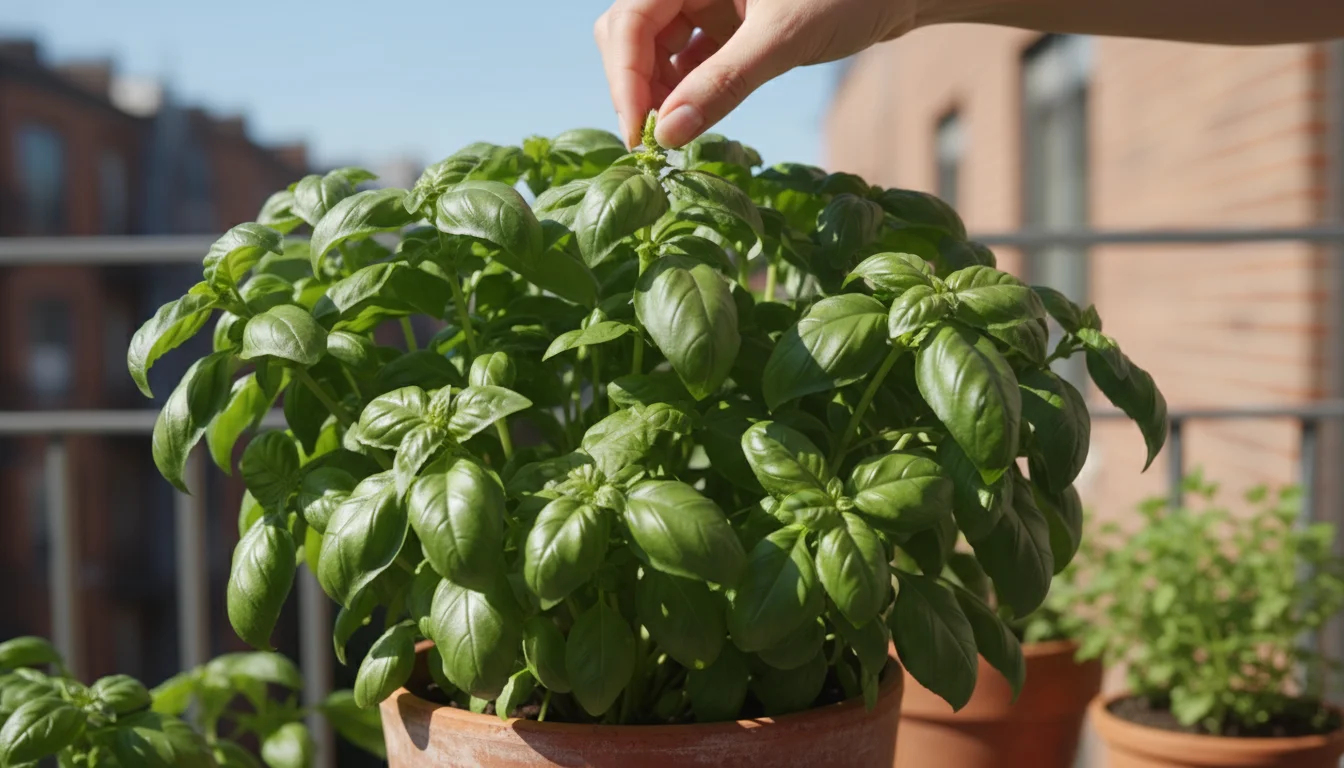
Harvesting for Continued Growth
Regular harvesting encourages most herbs to produce more foliage. This “cut-and-come-again” approach keeps your plants bushy and prevents them from flowering prematurely, which can sometimes reduce leaf flavor.
- Basil: Pinch off leaves or snip stems just above a leaf node. Do not take more than one-third of the plant at a time. Regularly pinch off flower buds to prolong leaf production.
- Chives: Snip leaves from the base of the plant with scissors, leaving about an inch above the soil.
- Cilantro/Parsley: Harvest outer leaves from the base of the plant, or snip entire stems for larger quantities. Allow some cilantro to flower if your goal is attracting beneficial insects or harvesting coriander seeds.
- Dill: Snip off fronds as needed. If you want dill seeds, let some plants go to flower and dry on the stem.
- Mint/Oregano: Snip stems just above a leaf node. These herbs respond well to aggressive harvesting.
- Rosemary/Thyme: Snip off woody stems with leaves. For rosemary, avoid cutting into the oldest, woody part of the plant too aggressively.
Harvest your companion herbs in the morning after the dew has dried but before the heat of the day. This is when their essential oils are most concentrated, resulting in the best flavor.
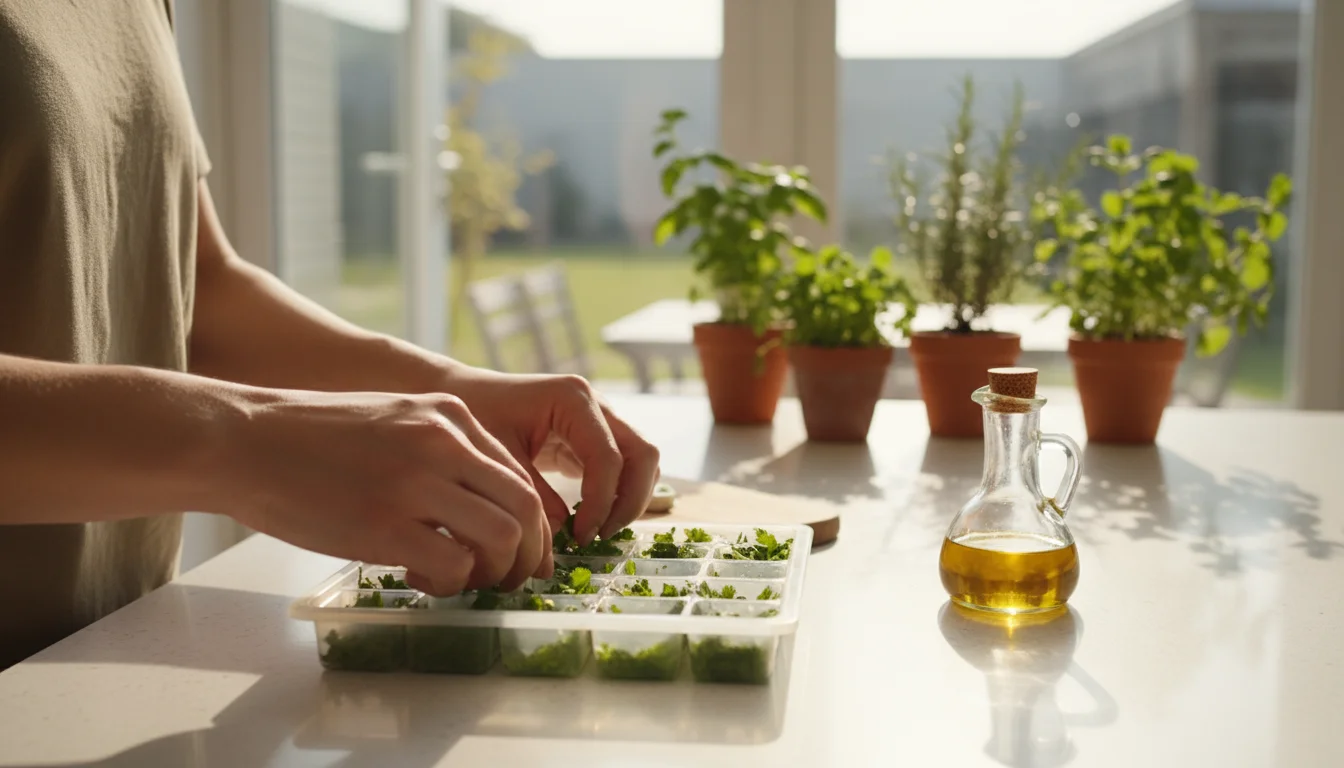
Storage and Preservation
You can store most fresh herbs for a few days by wrapping them loosely in a damp paper towel and placing them in a plastic bag in the refrigerator. For longer storage, consider these methods:
- Freezing: Chop herbs finely and mix with a little water or olive oil, then freeze in ice cube trays. Once frozen, transfer the cubes to freezer bags. This works well for basil, parsley, cilantro, and chives.
- Drying: Tie bunches of herbs (rosemary, thyme, oregano) and hang them in a warm, dry, well-ventilated area away from direct sunlight. You can also use a food dehydrator or a low oven setting.
- Herb Butters/Oils: Infuse herbs into butter or olive oil for flavorful cooking additions.
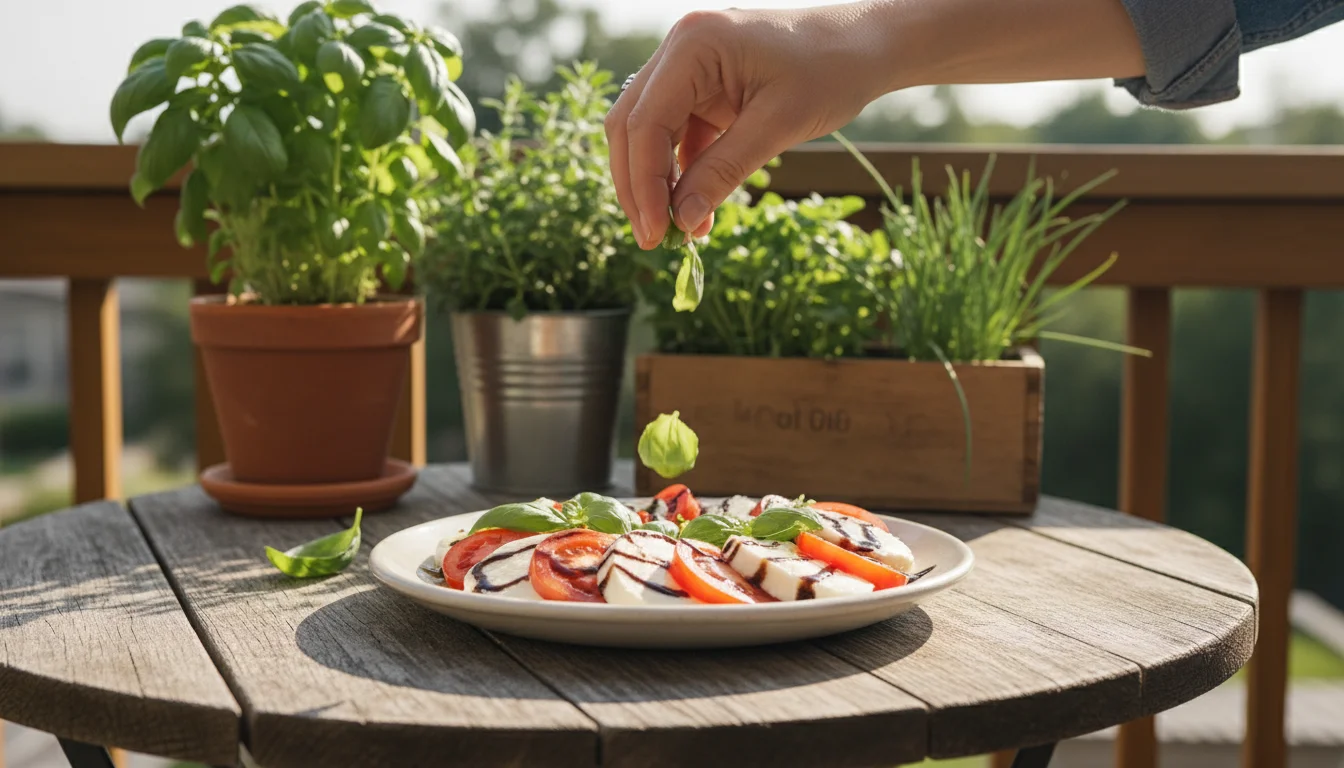
Culinary Delights
The beauty of your companion herbs extends directly to your plate. Imagine fresh basil from your garden transforming a simple tomato salad, or fragrant rosemary infusing roasted potatoes. Your homegrown herbs offer a depth of flavor far superior to store-bought varieties.
- Basil: Essential for Caprese salads, pesto, and enhancing tomato sauces.
- Chives: Perfect for eggs, baked potatoes, and adding a delicate onion flavor to salads.
- Cilantro: A must for tacos, salsas, and many Asian dishes.
- Dill: Fantastic with fish, potatoes, and in pickling.
- Mint: Refreshing in drinks, salads, and lamb dishes.
- Oregano: A staple for pizzas, pasta sauces, and Mediterranean cuisine.
- Parsley: A versatile garnish, and a key ingredient in tabbouleh or chimichurri.
- Rosemary: Excellent with roasted vegetables, chicken, and lamb.
- Thyme: Pairs beautifully with poultry, root vegetables, and in soups.
You are not just growing plants; you are cultivating a delicious, natural synergy that benefits your garden and your kitchen. Enjoy the fruits, and flavors, of your labor.
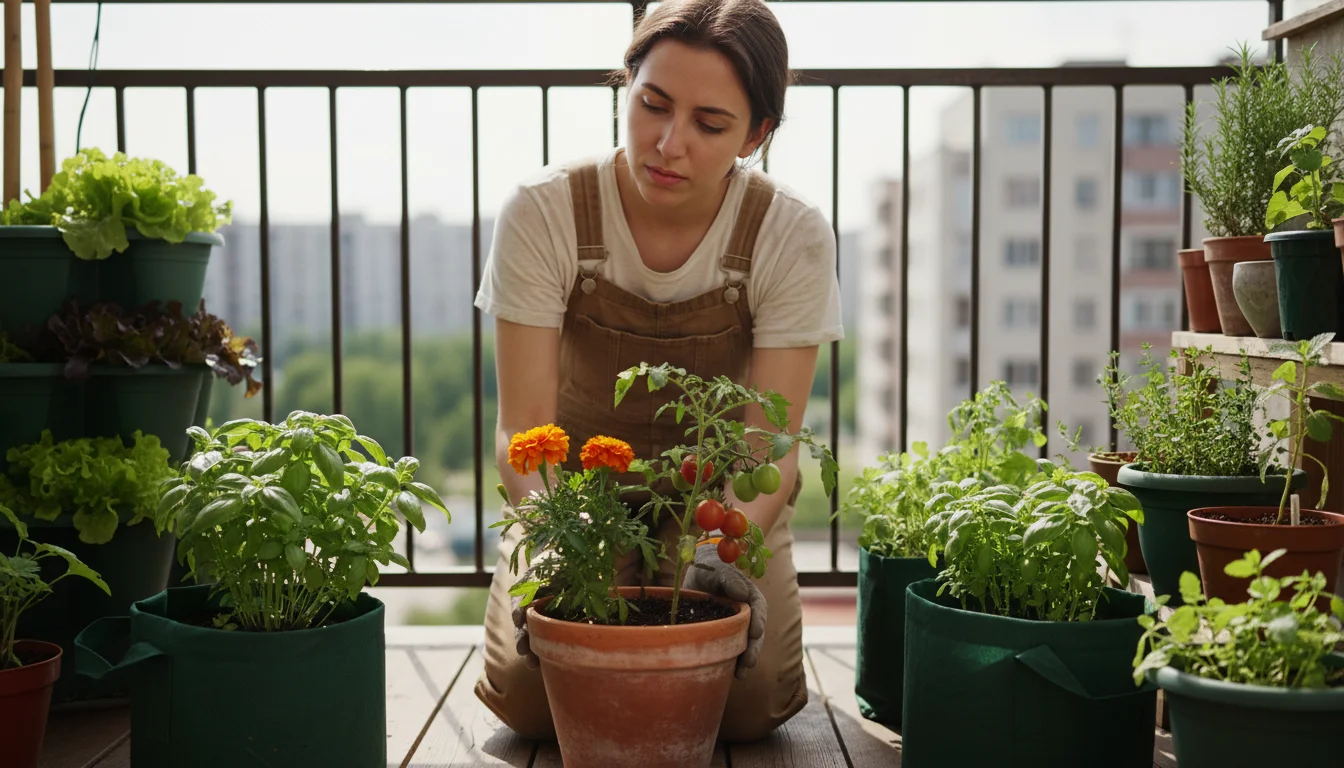
Frequently Asked Questions
What is the most effective companion herb for tomatoes?
Basil is widely considered the most effective companion herb for tomatoes. Its strong aroma deters common tomato pests like whiteflies and tomato hornworms. Many gardeners also report it enhances tomato flavor. Plant basil directly at the base of your tomato plants for maximum benefit.
Can I plant different herbs together in one pot?
Yes, you can plant different herbs together in one pot, provided they have similar light and water requirements. Good combinations include rosemary, thyme, and oregano, which all prefer full sun and well-drained soil. Avoid planting aggressive herbs like mint with others unless you use a separate, submerged container for the mint to prevent its roots from taking over.
How close should companion herbs be to vegetables?
For pest deterrence, plant companion herbs close enough for their aroma to be effective, typically within a foot or two of the target vegetable. When interplanting in containers or raised beds, place them directly at the base of the vegetable or as a border around the plant. For attracting beneficial insects, it is often sufficient to have flowering herbs nearby in an adjacent pot or within the same bed.
Do companion herbs actually improve vegetable flavor?
Many gardeners assert that certain companion herbs, such as basil with tomatoes, enhance vegetable flavor. While scientific proof can be elusive and often depends on individual palates, observations suggest subtle changes in flavor compounds or overall plant health from reduced stress or pest pressure. You can easily test this in your own garden by comparing vegetables grown with and without their herb companions.
What if I do not have enough space for many companion herbs?
Even with minimal space, you can still benefit from companion herbs. Prioritize 1-2 key herbs that address your main concerns (e.g., basil for tomatoes, chives for aphids). Use single pots for each herb and place them strategically next to your vegetables. You can also incorporate herbs into vertical planters or window boxes, maximizing your small footprint while still gaining their protective and beneficial properties.
Disclaimer: This article is for informational purposes only and is not a substitute for professional advice. Consult local extension services for region-specific recommendations.
